
understand-r1-zero
Understanding R1-Zero-Like Training: A Critical Perspective
Stars: 777
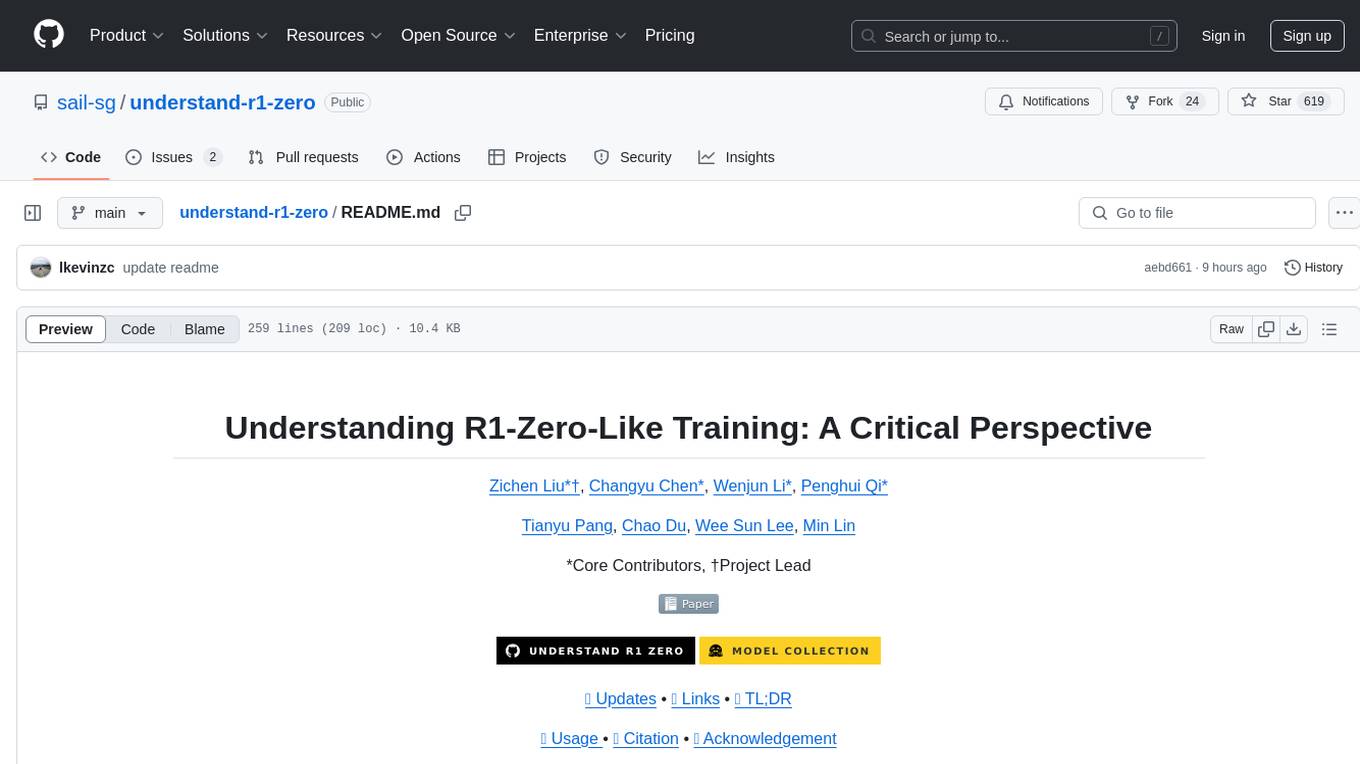
The 'understand-r1-zero' repository focuses on understanding R1-Zero-like training from a critical perspective. It provides insights into base models and reinforcement learning components, highlighting findings and proposing solutions for biased optimization. The repository offers a minimalist recipe for R1-Zero training, detailing the RL-tuning process and achieving state-of-the-art performance with minimal compute resources. It includes codebase, models, and paper related to R1-Zero training implemented with the Oat framework, emphasizing research-friendly and efficient LLM RL techniques.
README:
Zichen Liu*†, Changyu Chen*, Wenjun Li*, Penghui Qi*
Tianyu Pang, Chao Du, Wee Sun Lee, Min Lin
*Core Contributors, †Project Lead
- 21/03/2025: 🎉 We release our paper, models and codebase. Our R1-Zero training is implemented with 🌾 Oat, a highly modular, research-friendly and efficient LLM RL framework.
-
Understanding R1-Zero-Like Training: A Critical Perspective
- 📄 Paper
- 🤗 Models
- 🚀 Release tweet
-
There May Not Be Aha Moment in R1-Zero-like Training — A Pilot Study
- 📄 Blog
- 💻 Code
- 🚀 Release tweet
-
OAT: A research-friendly framework for LLM online alignment
- 💻 Codebase
To understand R1-Zero-like training, we critically examine two core components: base models and reinforcement learning. We highlight our findings below.
- DeepSeek-V3-Base already exhibit "Aha moment".
- As the popular choice for R1-Zero-like training, Qwen2.5 base models demonstrate strong reasoning capabilities even without prompt templates: the average benchmark scores improve by ~60% (compared to the traditional 4-shot prompting)!
- GRPO leads to biased optimization! We propose a simple fix that improves token efficiency while maintaining reasoning performance, termed as Dr. GRPO (GRPO Done Right).
- In R1-Zero-like training, the template and the question set perform a duet to affect the RL dynamics
- (Left Plot) For Qwen2.5-Math-1.5B, a mismatched template (e.g., R1 template) in fact destroys the reasoning capabilities before RL reconstructing it. This makes the improvement impressive on the surface.
- (Middle Plot) However, if a template does not deviate from the pretraining distribution too far, even a small and completely o.o.d. question set (e.g., GSM8K) could induce the reasoning ability equally well, by reinforcing correct reasoning behaviors instead of infusing new knowledge.
- Beyond Qwen, Llama can also be RL-tuned from base models. In this case, domain-specific pretraining will improves RL ceiling.
- (Right Plot) GRPO can even make Llama with math knowledge "Aha" by increasing the output length; however, it is likely due to its length bias, which can be removed by Dr. GRPO.
Our analysis suggests a minimalist recipe for R1-Zero-like training:
We RL-tune Qwen2.5- Math-7B using the (unbiased) Dr. GRPO algorithm on MATH level 3-5 questions with the Qwen-Math template, and achieve state-of-the-art performance with only 27 hours compute on 8× A100 GPUs.
If you are interested in more details, please check out our paper!
We recommend a clean python==3.10 environment for development.
# Install vllm & oat, the LLM RL framework we developed r1-zero training on.
pip install vllm==0.7.2 && pip install oat-llm==0.0.9
# Install this package locally to use the math grader.
git clone [email protected]:sail-sg/understand-r1-zero.git && cd understand-r1-zero
pip install -e .We implement R1-Zero training by extending Oat's Learner and Actor components. Please see train_zero_math.py for a step-by-step guide.
# Patch LD_LIBRARY_PATH to avoid dependency errors:
export LD_LIBRARY_PATH=$(python -c "import sysconfig; print(sysconfig.get_config_var('LIBDIR'))"):$LD_LIBRARY_PATH
# Run the experiment (tested on 8 x A100-40G) with Dr. GRPO:
# (change to `--critic_type grpo` for running GRPO)
python train_zero_math.py \
--critic_type drgrpo \
--gpus 8 \
--enable_prefix_caching \
--collocate \
--vllm_sleep \
--vllm_gpu_ratio 0.35 \
--gradient-checkpointing \
--flash-attn \
--bf16 \
--rnd-seed \
--learning_rate 0.000001 \
--lr_scheduler constant \
--num_ppo_epochs 1 \
--beta 0 \
--oracle_type reward \
--oracle math \
--pretrain Qwen/Qwen2.5-Math-1.5B \
--prompt_template r1 \
--zero-stage 2 \
--ref_offload \
--prompt_data ./datasets/train/math_12k \
--train_split train \
--input_key problem \
--output_key answer \
--max-train 9999999 \
--num_prompt_epoch 20 \
--prompt_max_length 1024 \
--num_samples 8 \
--temperature 1 \
--top_p 1 \
--generate_max_length 3000 \
--save_steps -1 \
--train_batch_size 128 \
--train_batch_size_per_device 1 \
--mini_train_batch_size_per_device 1 \
--rollout_batch_size 128 \
--rollout_batch_size_per_device 16 \
--pi_buffer_maxlen_per_device 128 \
--eval_batch_size 200 \
--eval_steps 16 \
--eval_temperature 0 \
--eval_generate_max_length 3000 \
--eval_data ./datasets/evaluation_suite \
--eval_input_key input \
--use-wb \
--wb-run-name qwen2.5-Math-1.5b-r1-zero \
--wb_project oat-zeroPlease see here for more example scripts.
# Evaluate our models:
python evaluate_model.py --model_name sail/Qwen2.5-Math-7B-Oat-Zero
python evaluate_model.py --model_name sail/Qwen2.5-Math-1.5B-Oat-Zero
python evaluate_model.py --model_name sail/Llama-3.2-3B-Oat-Zero --template r1
# Evaluate baseline models:
python evaluate_model.py --model_name Qwen/Qwen2.5-Math-1.5B
python evaluate_model.py --model_name Qwen/Qwen2.5-Math-7B
python evaluate_model.py --model_name hkust-nlp/Qwen-2.5-Math-7B-SimpleRL-Zero
python evaluate_model.py --model_name PRIME-RL/Eurus-2-7B-PRIME-Zero
python evaluate_model.py --model_name Open-Reasoner-Zero/Open-Reasoner-Zero-7BWe provide a script to serve DeepSeek-V3-Base and DeepSeek-R1-Zero on k8s cluster.
# prerequisites:
# 1. download the model weights
# 2. starting a k8s job with sglang docker image "lmsysorg/sglang:v0.4.3.post2-cu125"
# start the server:
bash deploy_dpsk/serving.sh <model_name> <num_nodes>Example of API call:
from openai import OpenAI
# MASTER_ADDR is the environment variable set by the k8s job
api_base = "http://{MASTER_ADDR}:30000/v1"
api_key = "EMPTY"
client = OpenAI(
api_key=api_key,
base_url=api_base,
)
# send requests to the server ...Notes:
- Your k8s container should have environment variable
MASTER_ADDRandMASTER_PORTset. - Hardware requirements:
2 x 8 x H100/800/20for FP8 and4 x 8 x A100/A800for BF16. - Please refer to sglang's official tutorial for more details.
If you find our works useful for your research, please consider citing:
-
This paper:
@article{liu2025understanding, title={Understanding R1-Zero-Like Training: A Critical Perspective}, author={Zichen Liu and Changyu Chen and Wenjun Li and Penghui Qi and Tianyu Pang and Chao Du and Wee Sun Lee and Min Lin}, journal={arXiv preprint arXiv:2503.20783}, year={2025} }
-
Our blog that conducted the first investigation on the "Aha moment":
@misc{liu2025there, title={There May Not be Aha Moment in R1-Zero-like Training — A Pilot Study}, author={Zichen Liu and Changyu Chen and Wenjun Li and Tianyu Pang and Chao Du and Min Lin}, year={2025}, howpublished={\url{https://oatllm.notion.site/oat-zero}}, note={Notion Blog}, }
-
The training framework:
@misc{liu2025oat, title={OAT: A research-friendly framework for LLM online alignment}, author={Zichen Liu and Changyu Chen and Chao Du and Wee Sun Lee and Min Lin}, year={2025} howpublished={\url{https://github.com/sail-sg/oat}}, }
- This work is supported by Sea AI Lab for computing resources.
- The training codes are built on Oat, which employs vLLM, DeepSpeed and launchpad. We serve DeepSeek models using SGLang.
- The base models are from Qwen2.5-Math, Llama, and DeepSeek.
- We thank Qingfeng Lan for his time in thoroughly reviewing our code.
For Tasks:
Click tags to check more tools for each tasksFor Jobs:
Alternative AI tools for understand-r1-zero
Similar Open Source Tools

understand-r1-zero
The 'understand-r1-zero' repository focuses on understanding R1-Zero-like training from a critical perspective. It provides insights into base models and reinforcement learning components, highlighting findings and proposing solutions for biased optimization. The repository offers a minimalist recipe for R1-Zero training, detailing the RL-tuning process and achieving state-of-the-art performance with minimal compute resources. It includes codebase, models, and paper related to R1-Zero training implemented with the Oat framework, emphasizing research-friendly and efficient LLM RL techniques.
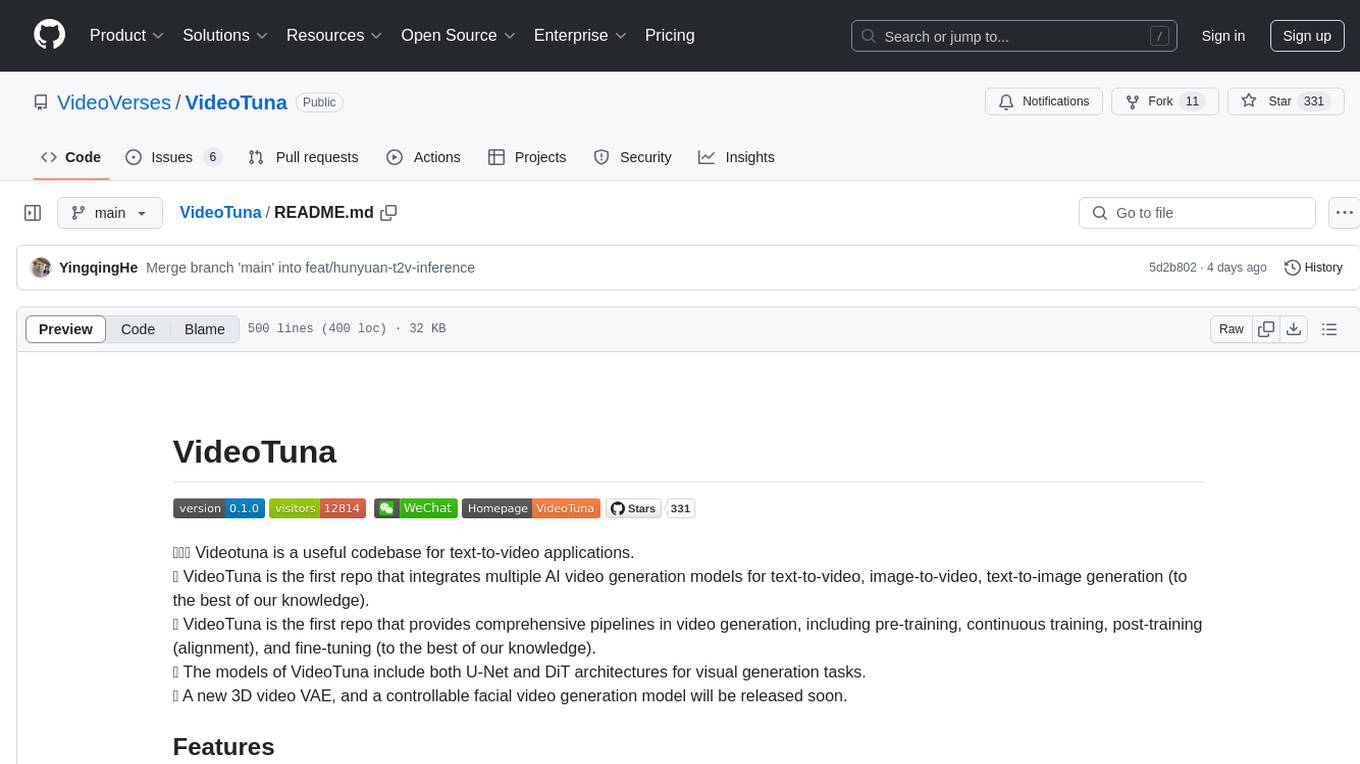
VideoTuna
VideoTuna is a codebase for text-to-video applications that integrates multiple AI video generation models for text-to-video, image-to-video, and text-to-image generation. It provides comprehensive pipelines in video generation, including pre-training, continuous training, post-training, and fine-tuning. The models in VideoTuna include U-Net and DiT architectures for visual generation tasks, with upcoming releases of a new 3D video VAE and a controllable facial video generation model.
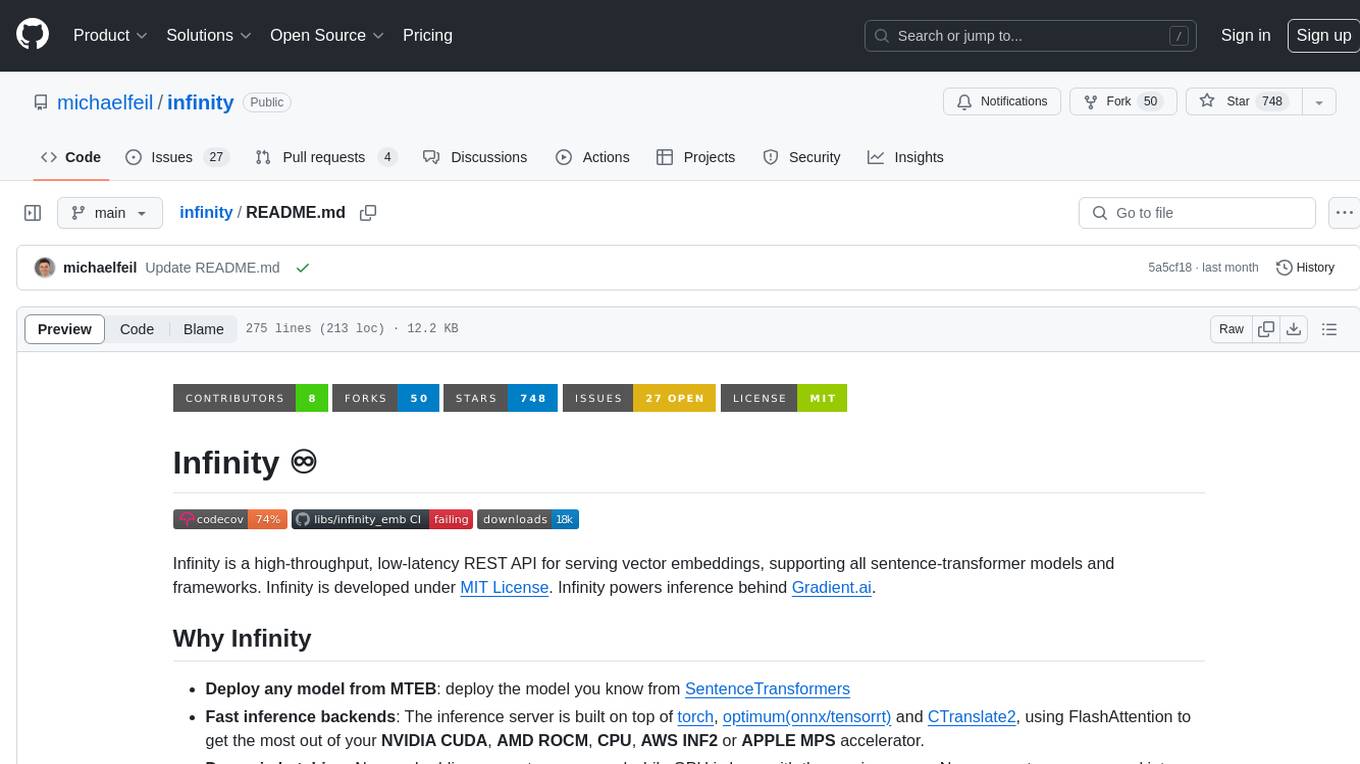
infinity
Infinity is a high-throughput, low-latency REST API for serving vector embeddings, supporting all sentence-transformer models and frameworks. It is developed under the MIT License and powers inference behind Gradient.ai. The API allows users to deploy models from SentenceTransformers, offers fast inference backends utilizing various accelerators, dynamic batching for efficient processing, correct and tested implementation, and easy-to-use API built on FastAPI with Swagger documentation. Users can embed text, rerank documents, and perform text classification tasks using the tool. Infinity supports various models from Huggingface and provides flexibility in deployment via CLI, Docker, Python API, and cloud services like dstack. The tool is suitable for tasks like embedding, reranking, and text classification.
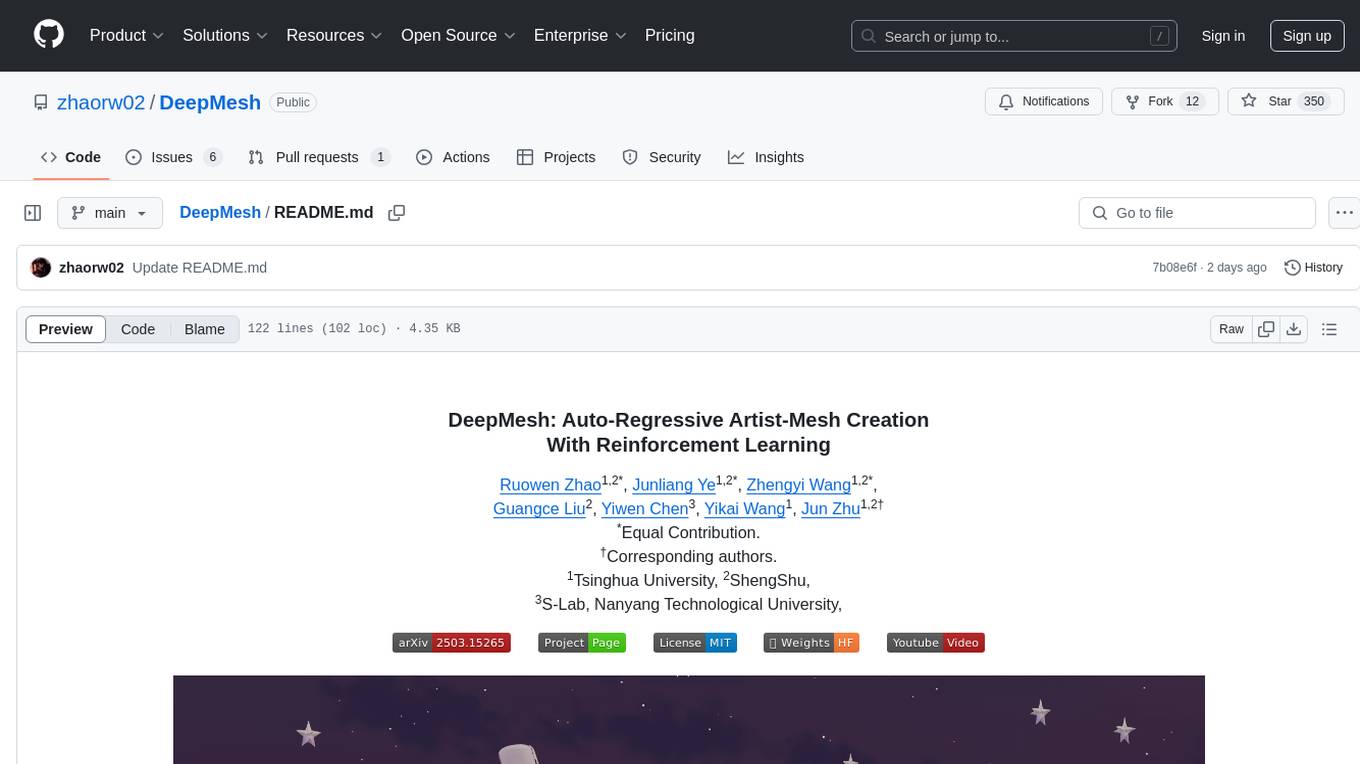
DeepMesh
DeepMesh is an auto-regressive artist-mesh creation tool that utilizes reinforcement learning to generate high-quality meshes conditioned on a given point cloud. It offers pretrained weights and allows users to generate obj/ply files based on specific input parameters. The tool has been tested on Ubuntu 22 with CUDA 11.8 and supports A100, A800, and A6000 GPUs. Users can clone the repository, create a conda environment, install pretrained model weights, and use command line inference to generate meshes.
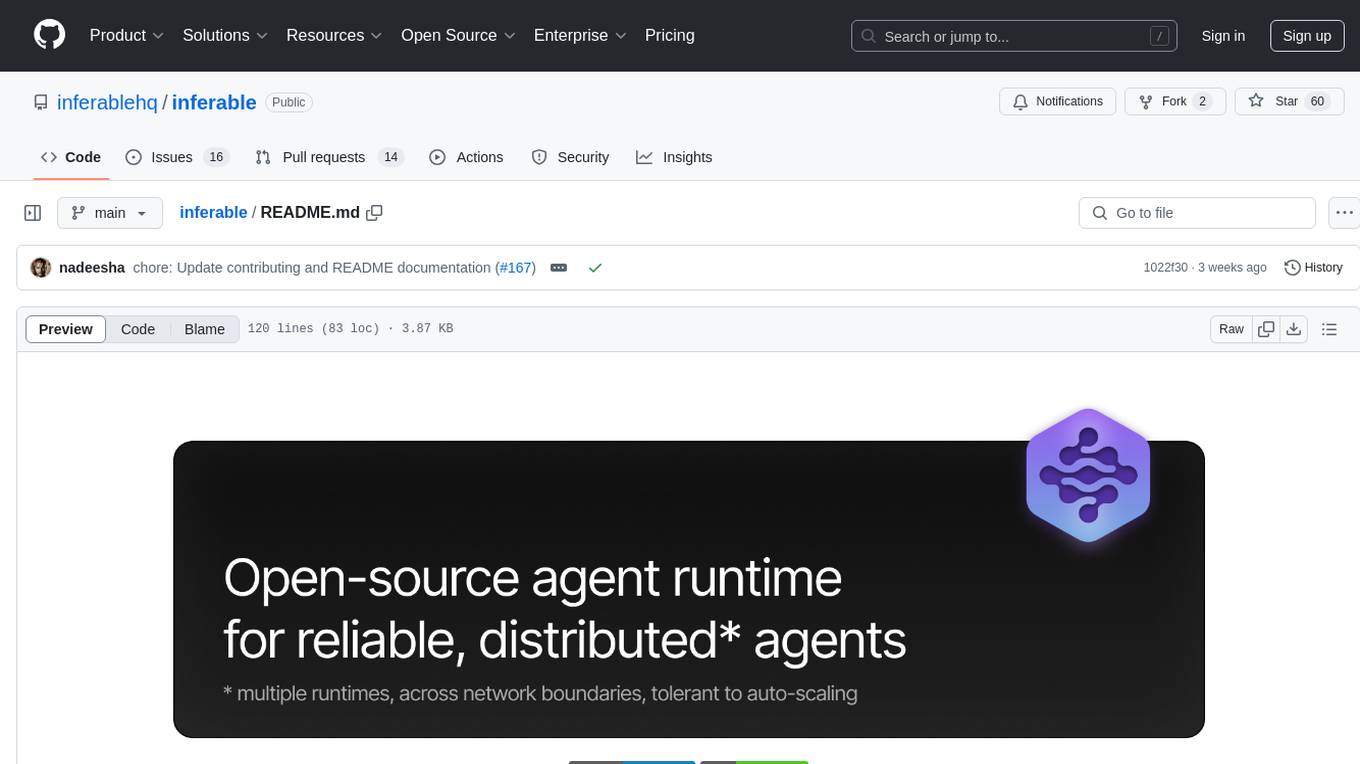
inferable
Inferable is an open source platform that helps users build reliable LLM-powered agentic automations at scale. It offers a managed agent runtime, durable tool calling, zero network configuration, multiple language support, and is fully open source under the MIT license. Users can define functions, register them with Inferable, and create runs that utilize these functions to automate tasks. The platform supports Node.js/TypeScript, Go, .NET, and React, and provides SDKs, core services, and bootstrap templates for various languages.
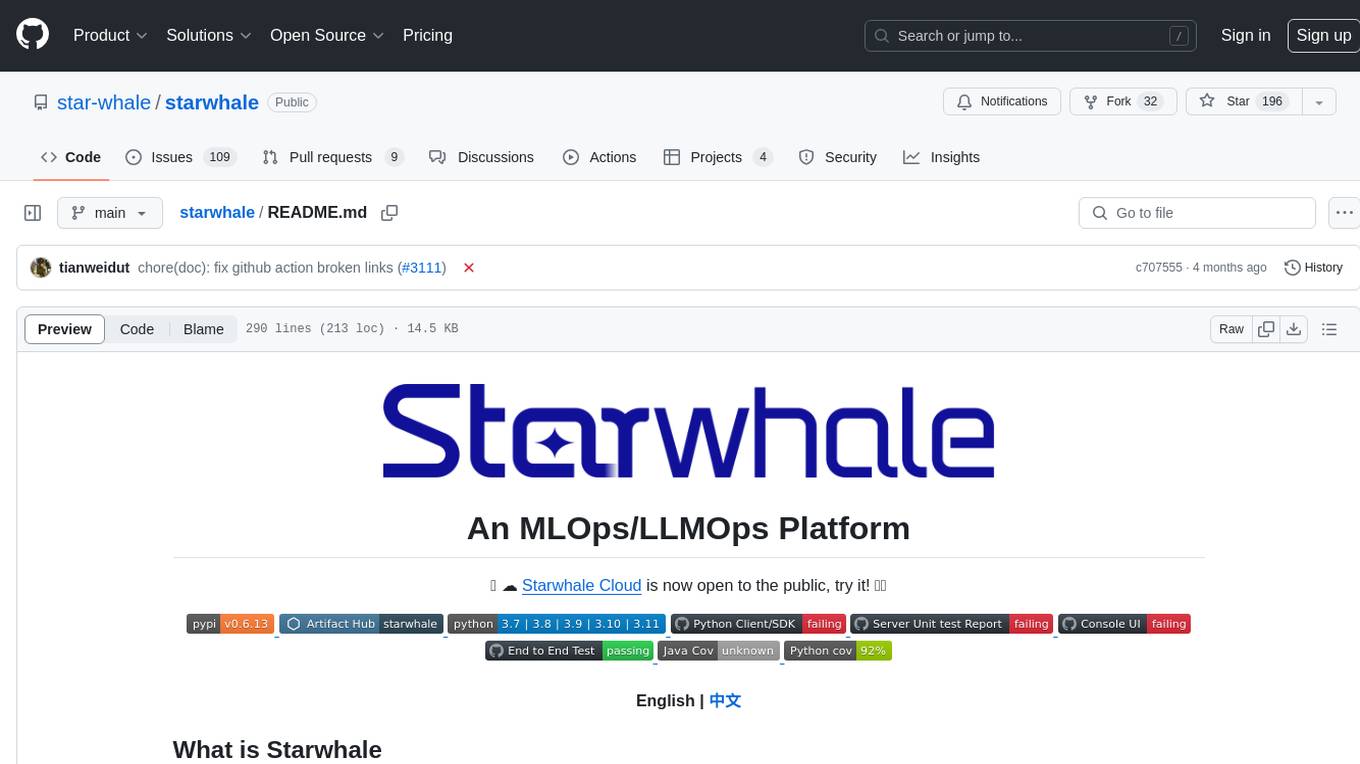
starwhale
Starwhale is an MLOps/LLMOps platform that brings efficiency and standardization to machine learning operations. It streamlines the model development lifecycle, enabling teams to optimize workflows around key areas like model building, evaluation, release, and fine-tuning. Starwhale abstracts Model, Runtime, and Dataset as first-class citizens, providing tailored capabilities for common workflow scenarios including Models Evaluation, Live Demo, and LLM Fine-tuning. It is an open-source platform designed for clarity and ease of use, empowering developers to build customized MLOps features tailored to their needs.
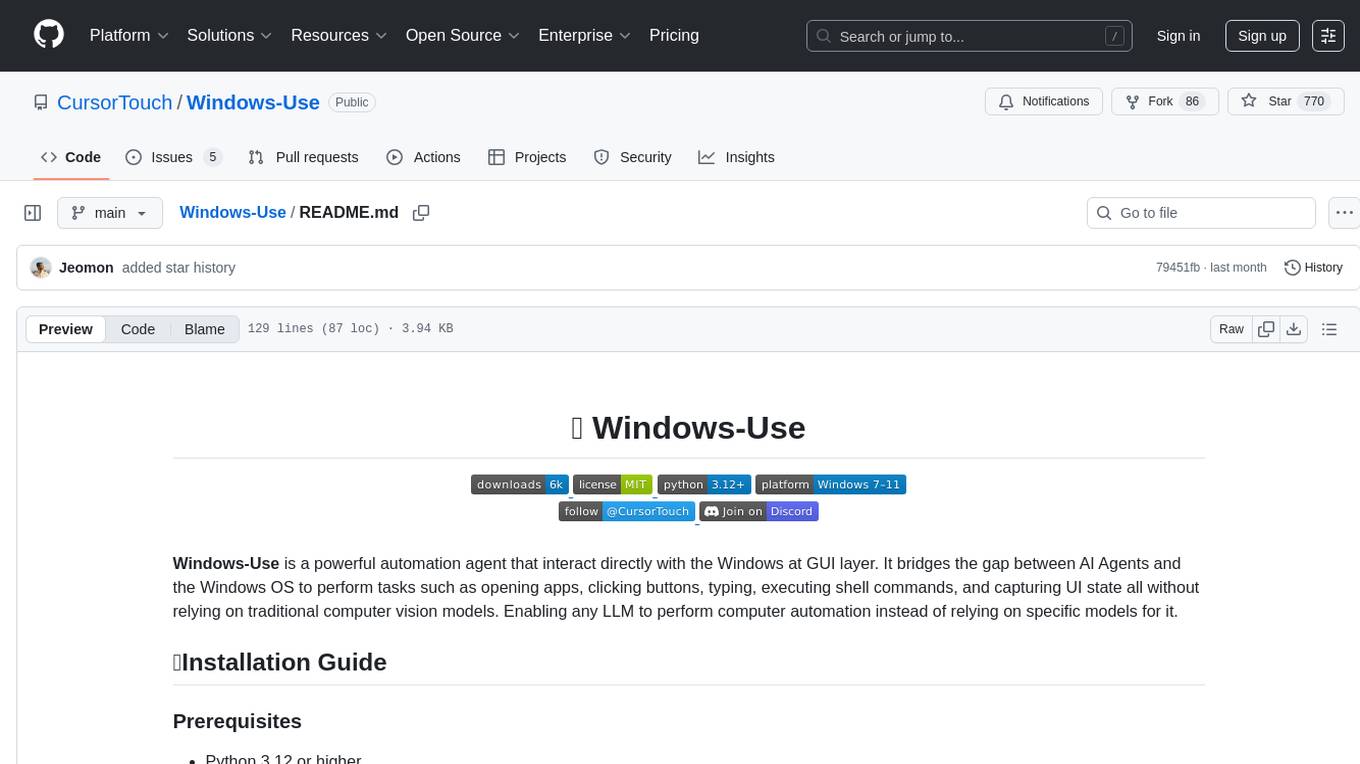
Windows-Use
Windows-Use is a powerful automation agent that interacts directly with the Windows OS at the GUI layer. It bridges the gap between AI agents and Windows to perform tasks such as opening apps, clicking buttons, typing, executing shell commands, and capturing UI state without relying on traditional computer vision models. It enables any large language model (LLM) to perform computer automation instead of relying on specific models for it.
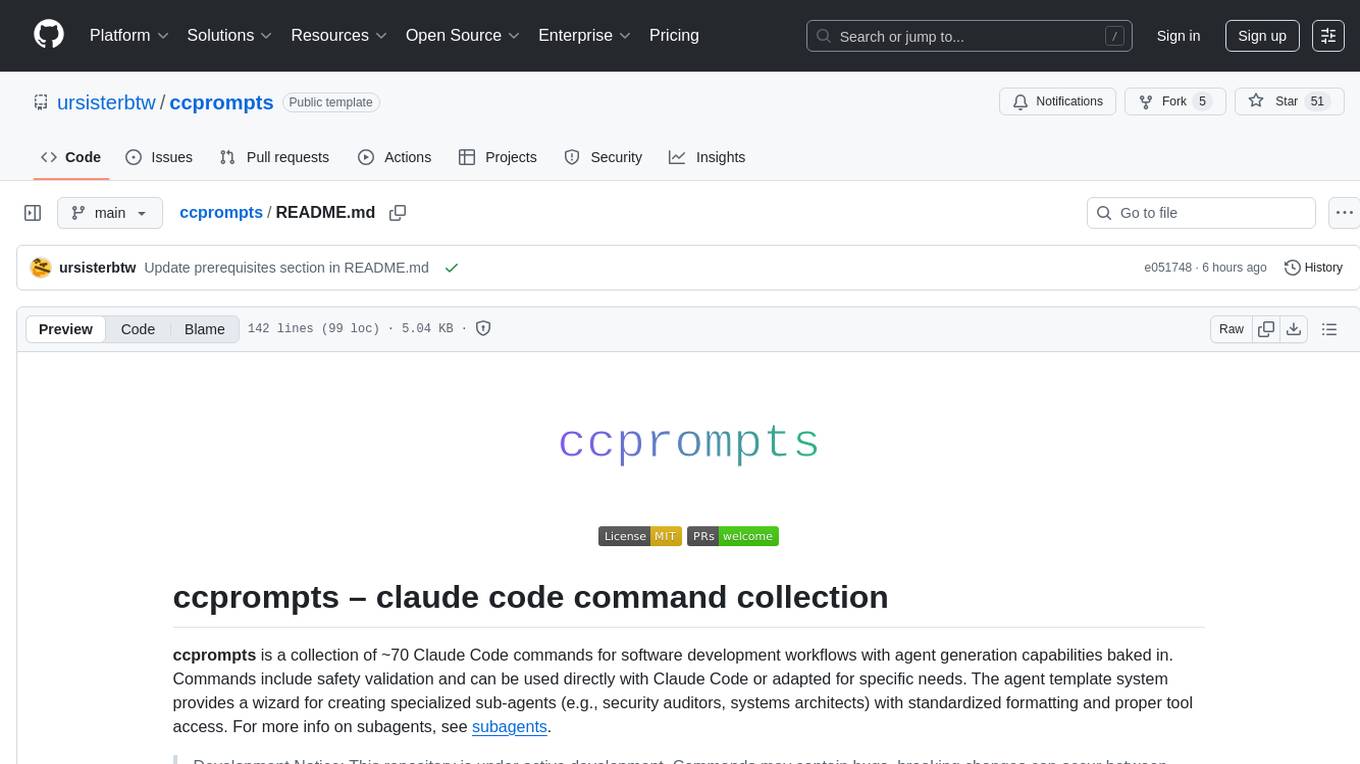
ccprompts
ccprompts is a collection of ~70 Claude Code commands for software development workflows with agent generation capabilities. It includes safety validation and can be used directly with Claude Code or adapted for specific needs. The agent template system provides a wizard for creating specialized sub-agents (e.g., security auditors, systems architects) with standardized formatting and proper tool access. The repository is under active development, so caution is advised when using it in production environments.
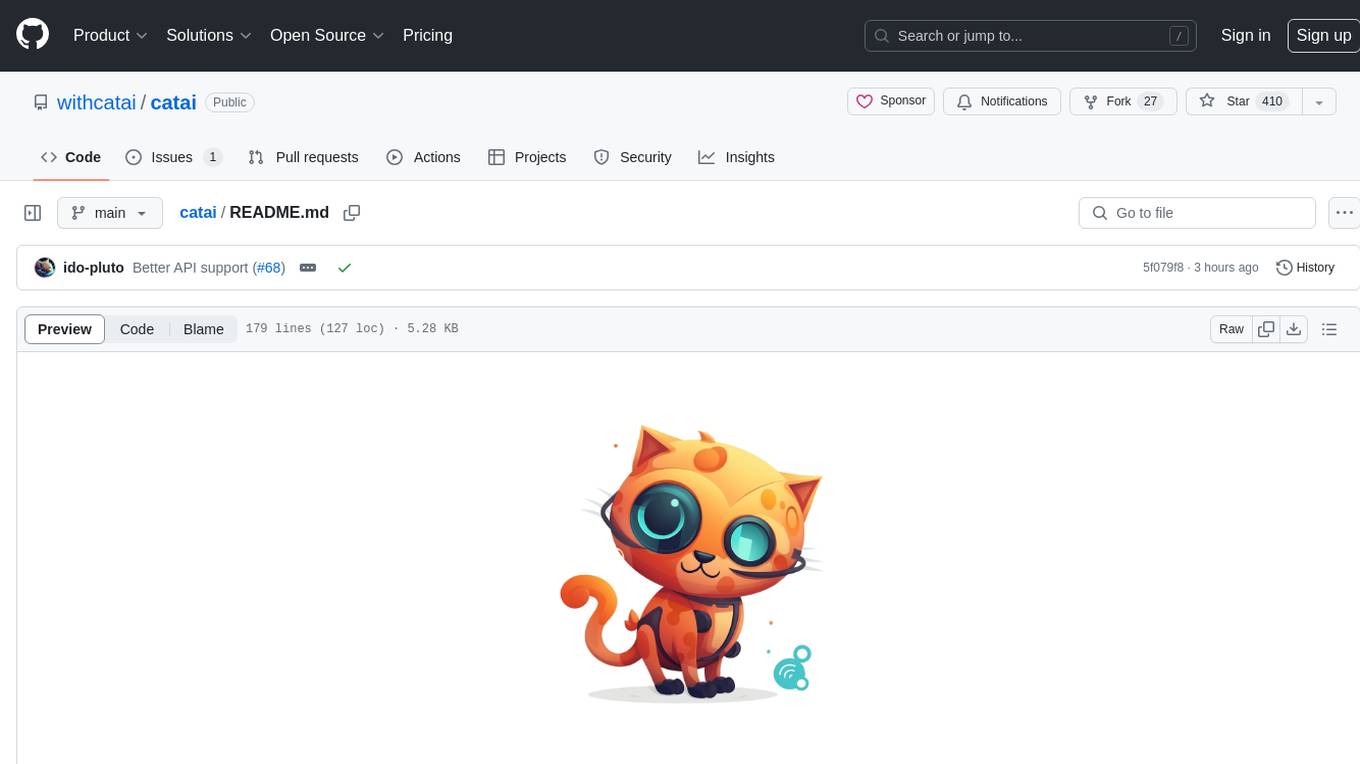
catai
CatAI is a tool that allows users to run GGUF models on their computer with a chat UI. It serves as a local AI assistant inspired by Node-Llama-Cpp and Llama.cpp. The tool provides features such as auto-detecting programming language, showing original messages by clicking on user icons, real-time text streaming, and fast model downloads. Users can interact with the tool through a CLI that supports commands for installing, listing, setting, serving, updating, and removing models. CatAI is cross-platform and supports Windows, Linux, and Mac. It utilizes node-llama-cpp and offers a simple API for asking model questions. Additionally, developers can integrate the tool with node-llama-cpp@beta for model management and chatting. The configuration can be edited via the web UI, and contributions to the project are welcome. The tool is licensed under Llama.cpp's license.
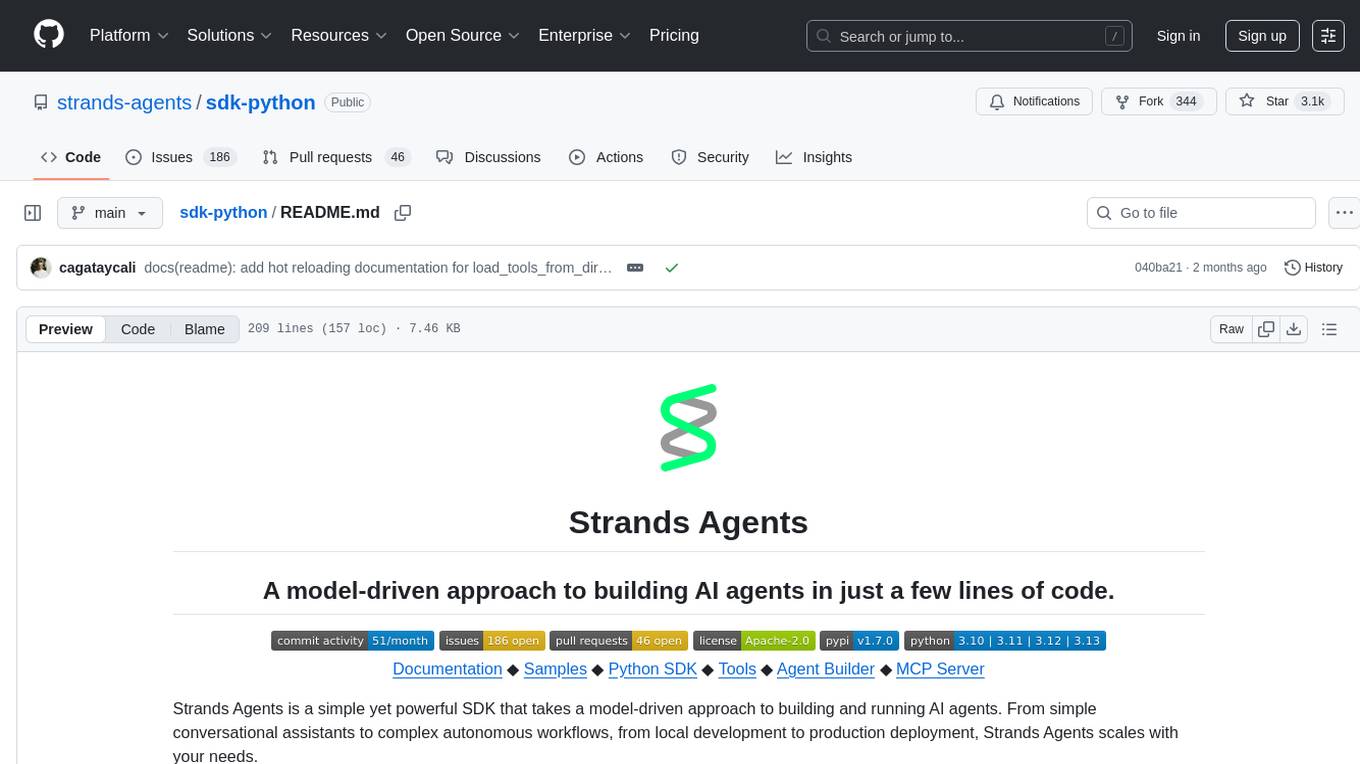
sdk-python
Strands Agents is a lightweight and flexible SDK that takes a model-driven approach to building and running AI agents. It supports various model providers, offers advanced capabilities like multi-agent systems and streaming support, and comes with built-in MCP server support. Users can easily create tools using Python decorators, integrate MCP servers seamlessly, and leverage multiple model providers for different AI tasks. The SDK is designed to scale from simple conversational assistants to complex autonomous workflows, making it suitable for a wide range of AI development needs.
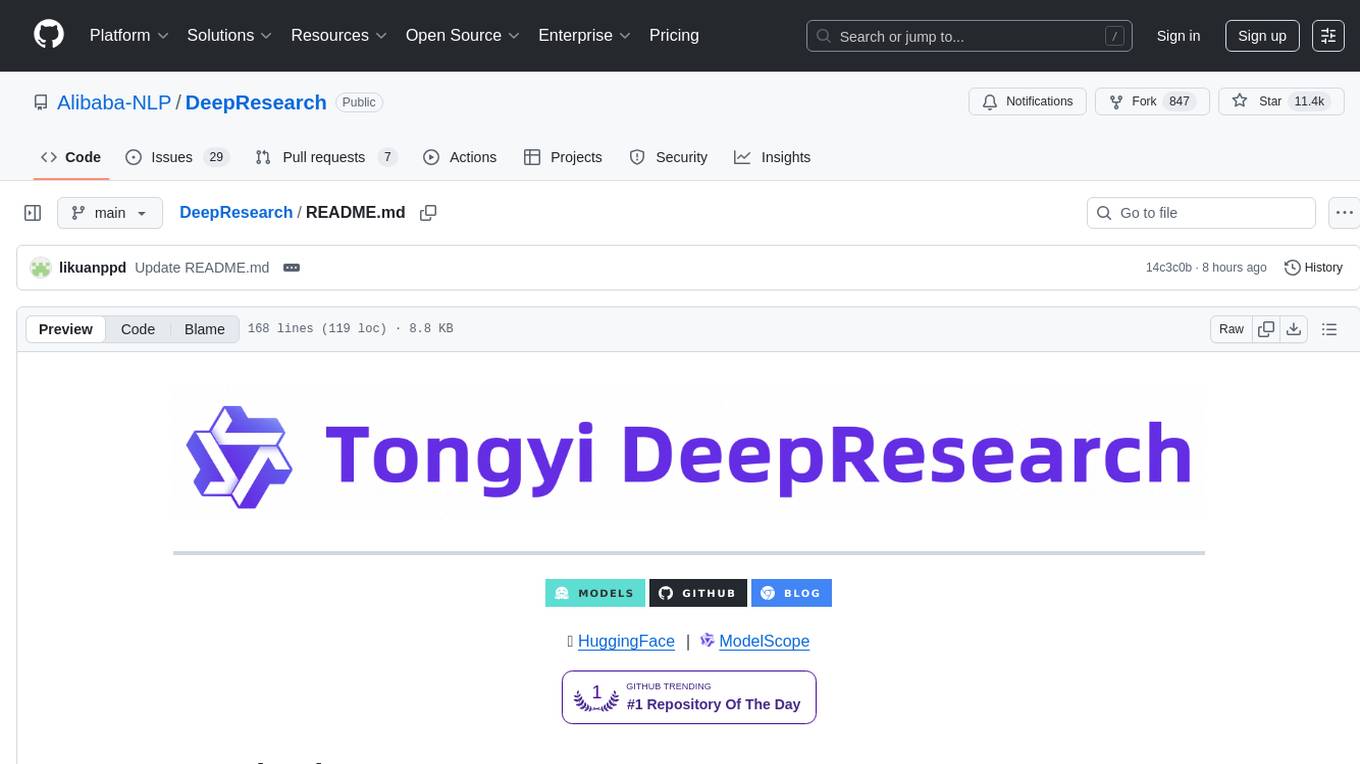
DeepResearch
Tongyi DeepResearch is an agentic large language model with 30.5 billion total parameters, designed for long-horizon, deep information-seeking tasks. It demonstrates state-of-the-art performance across various search benchmarks. The model features a fully automated synthetic data generation pipeline, large-scale continual pre-training on agentic data, end-to-end reinforcement learning, and compatibility with two inference paradigms. Users can download the model directly from HuggingFace or ModelScope. The repository also provides benchmark evaluation scripts and information on the Deep Research Agent Family.
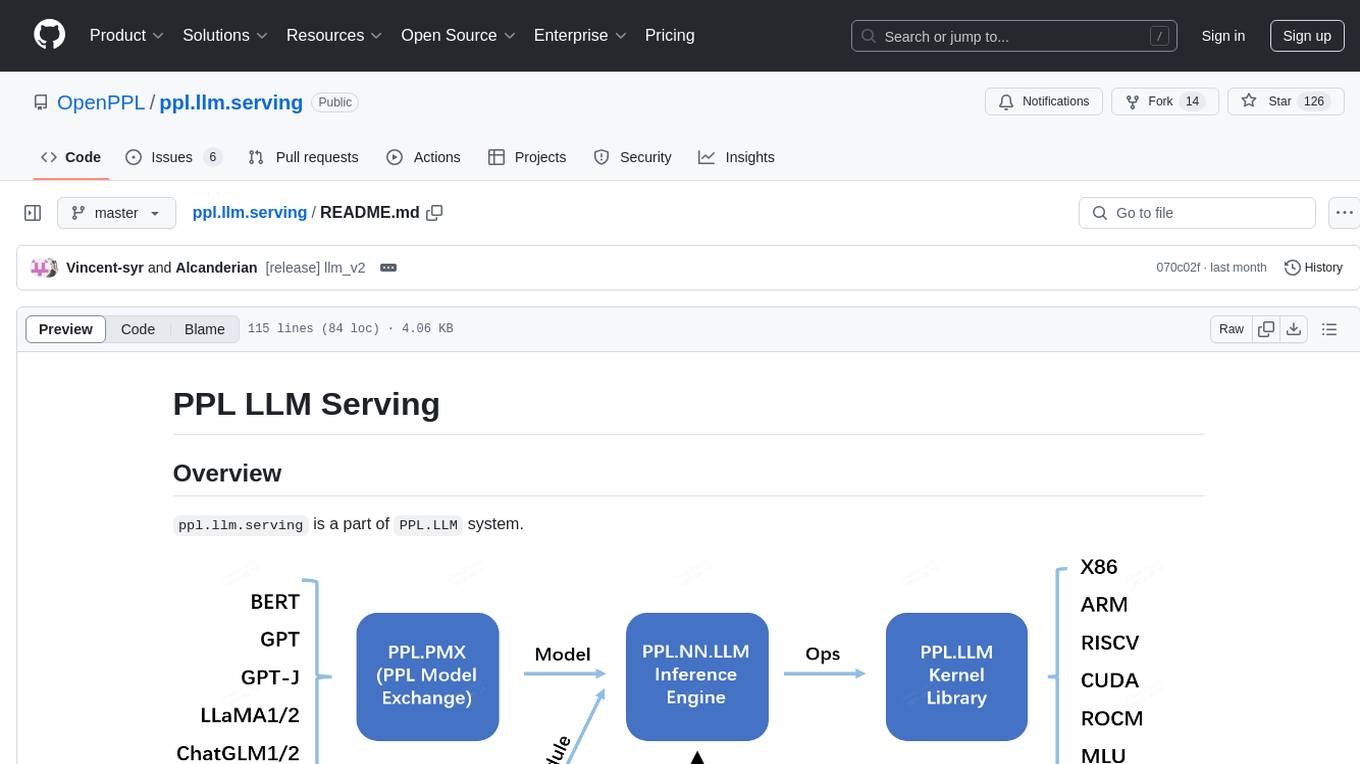
ppl.llm.serving
ppl.llm.serving is a serving component for Large Language Models (LLMs) within the PPL.LLM system. It provides a server based on gRPC and supports inference for LLaMA. The repository includes instructions for prerequisites, quick start guide, model exporting, server setup, client usage, benchmarking, and offline inference. Users can refer to the LLaMA Guide for more details on using this serving component.

zo2
ZO2 (Zeroth-Order Offloading) is an innovative framework designed to enhance the fine-tuning of large language models (LLMs) using zeroth-order (ZO) optimization techniques and advanced offloading technologies. It is tailored for setups with limited GPU memory, enabling the fine-tuning of models with over 175 billion parameters on single GPUs with as little as 18GB of memory. ZO2 optimizes CPU offloading, incorporates dynamic scheduling, and has the capability to handle very large models efficiently without extra time costs or accuracy losses.
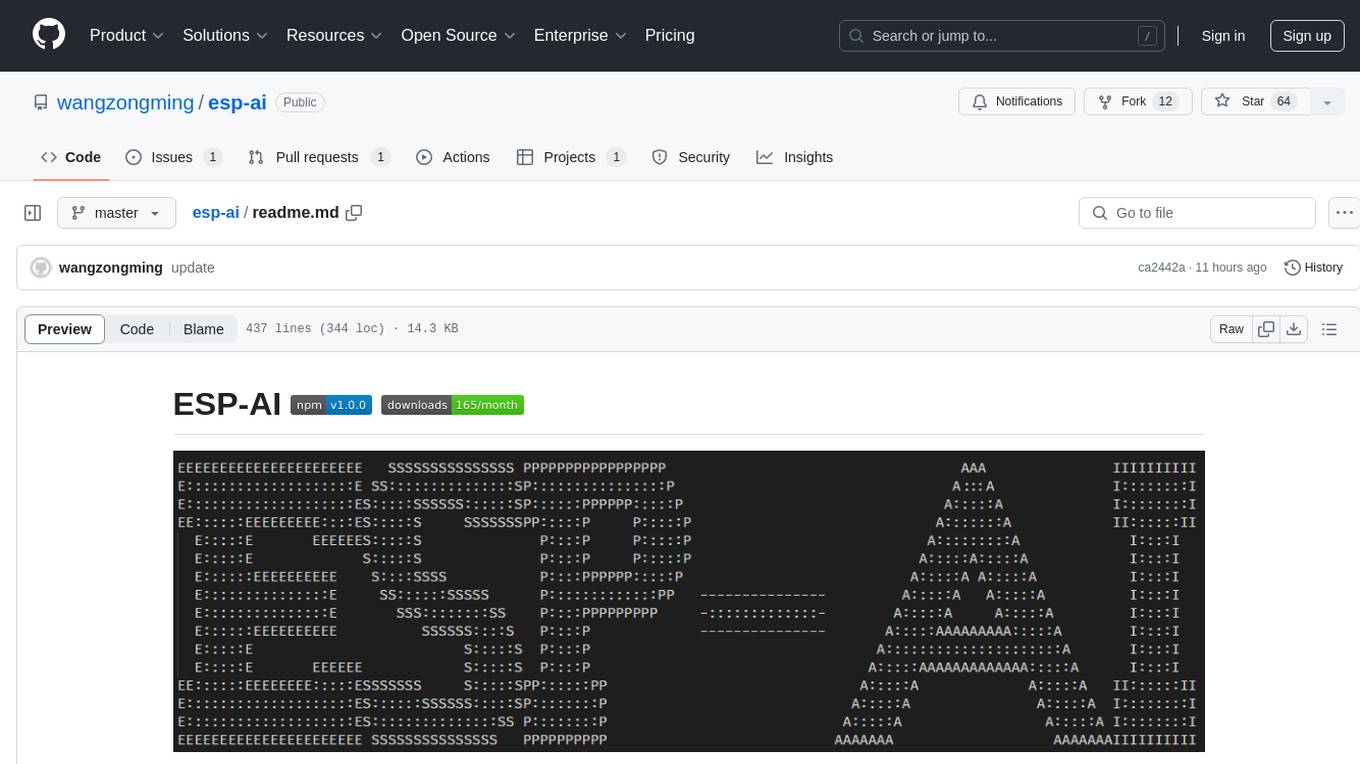
esp-ai
ESP-AI provides a complete AI conversation solution for your development board, including IAT+LLM+TTS integration solutions for ESP32 series development boards. It can be injected into projects without affecting existing ones. By providing keys from platforms like iFlytek, Jiling, and local services, you can run the services without worrying about interactions between services or between development boards and services. The project's server-side code is based on Node.js, and the hardware code is based on Arduino IDE.
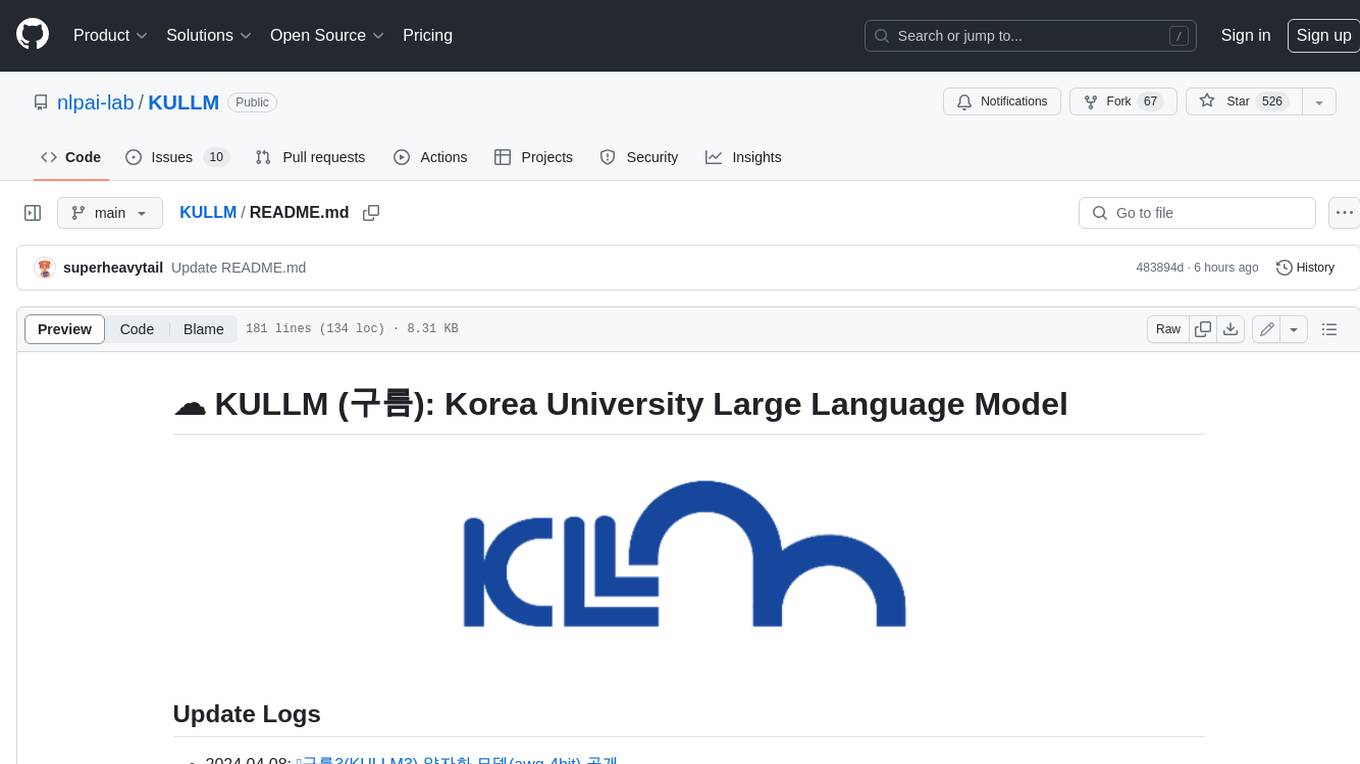
KULLM
KULLM (구름) is a Korean Large Language Model developed by Korea University NLP & AI Lab and HIAI Research Institute. It is based on the upstage/SOLAR-10.7B-v1.0 model and has been fine-tuned for instruction. The model has been trained on 8×A100 GPUs and is capable of generating responses in Korean language. KULLM exhibits hallucination and repetition phenomena due to its decoding strategy. Users should be cautious as the model may produce inaccurate or harmful results. Performance may vary in benchmarks without a fixed system prompt.
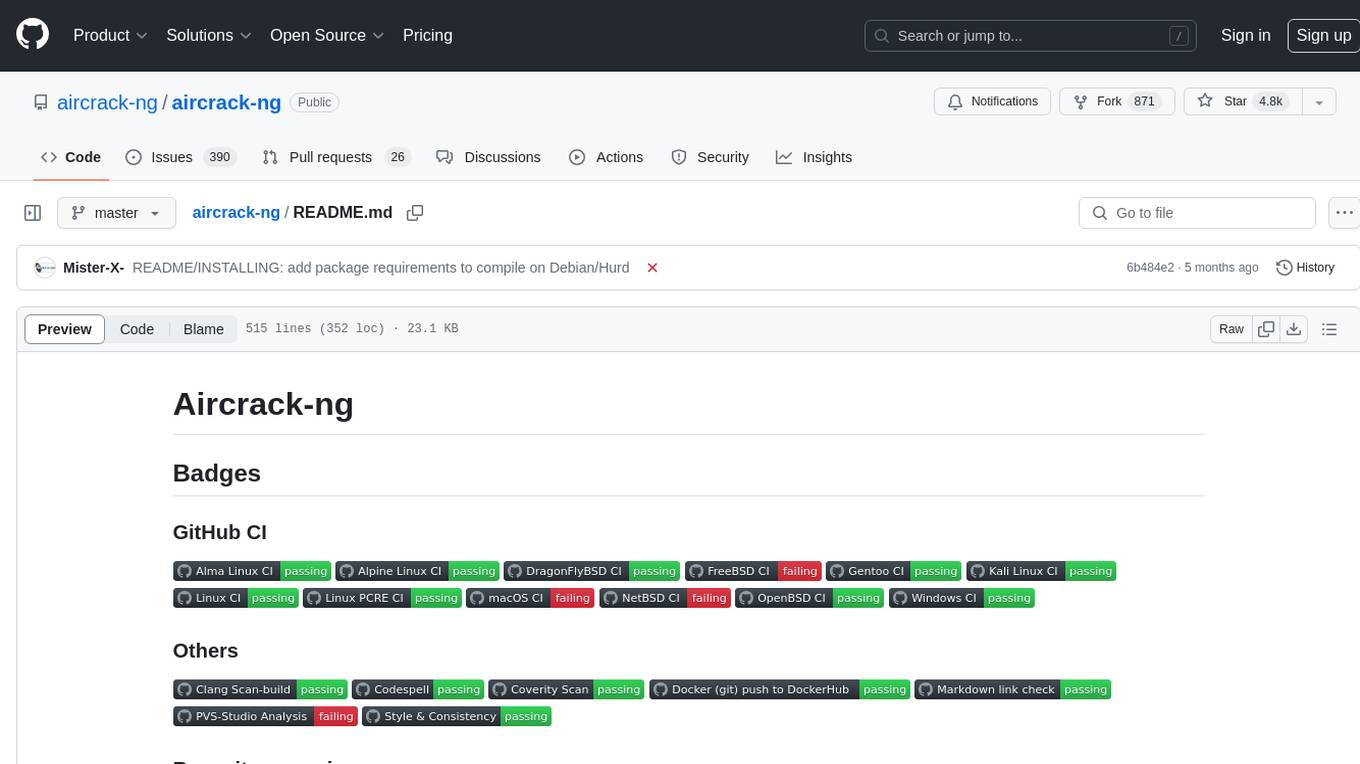
aircrack-ng
Aircrack-ng is a comprehensive suite of tools designed to evaluate the security of WiFi networks. It covers various aspects of WiFi security, including monitoring, attacking (replay attacks, deauthentication, fake access points), testing WiFi cards and driver capabilities, and cracking WEP and WPA PSK. The tools are command line-based, allowing for extensive scripting and have been utilized by many GUIs. Aircrack-ng primarily works on Linux but also supports Windows, macOS, FreeBSD, OpenBSD, NetBSD, Solaris, and eComStation 2.
For similar tasks

understand-r1-zero
The 'understand-r1-zero' repository focuses on understanding R1-Zero-like training from a critical perspective. It provides insights into base models and reinforcement learning components, highlighting findings and proposing solutions for biased optimization. The repository offers a minimalist recipe for R1-Zero training, detailing the RL-tuning process and achieving state-of-the-art performance with minimal compute resources. It includes codebase, models, and paper related to R1-Zero training implemented with the Oat framework, emphasizing research-friendly and efficient LLM RL techniques.
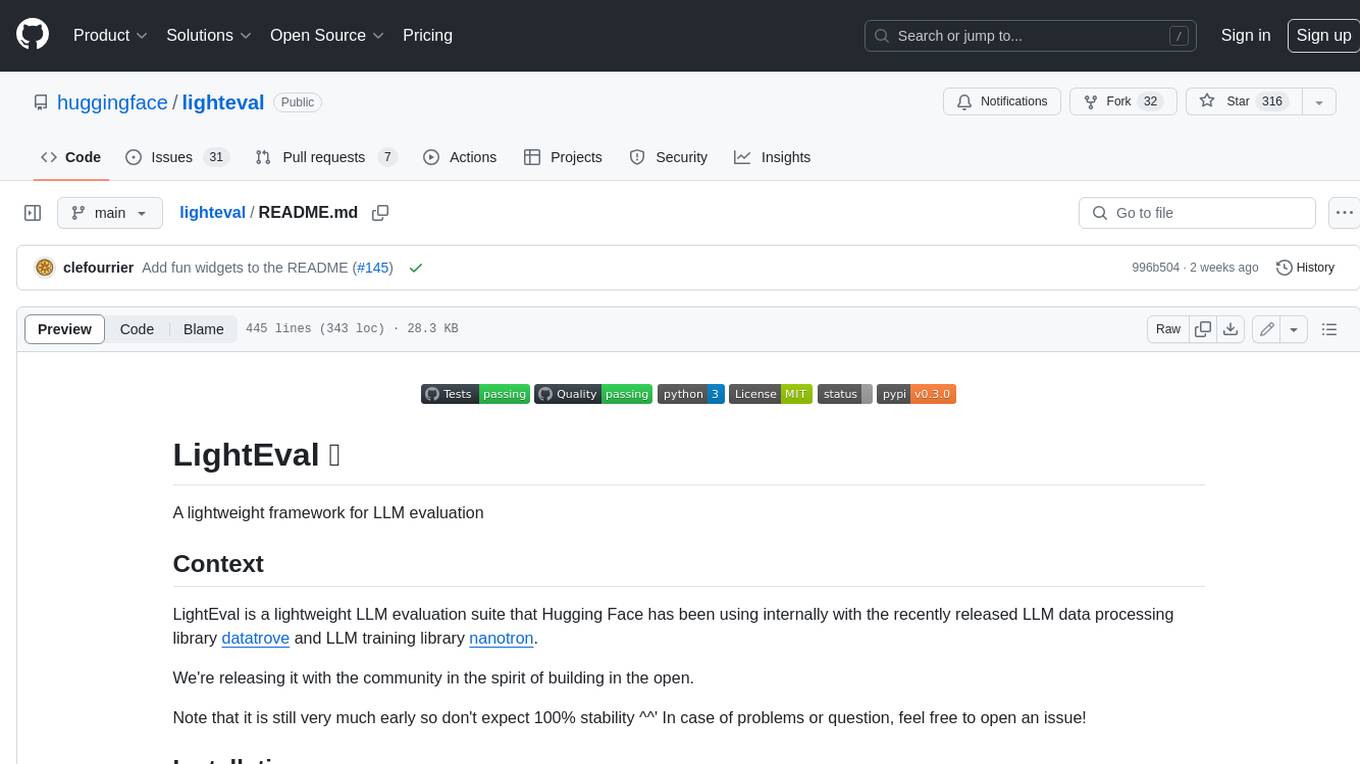
lighteval
LightEval is a lightweight LLM evaluation suite that Hugging Face has been using internally with the recently released LLM data processing library datatrove and LLM training library nanotron. We're releasing it with the community in the spirit of building in the open. Note that it is still very much early so don't expect 100% stability ^^' In case of problems or question, feel free to open an issue!
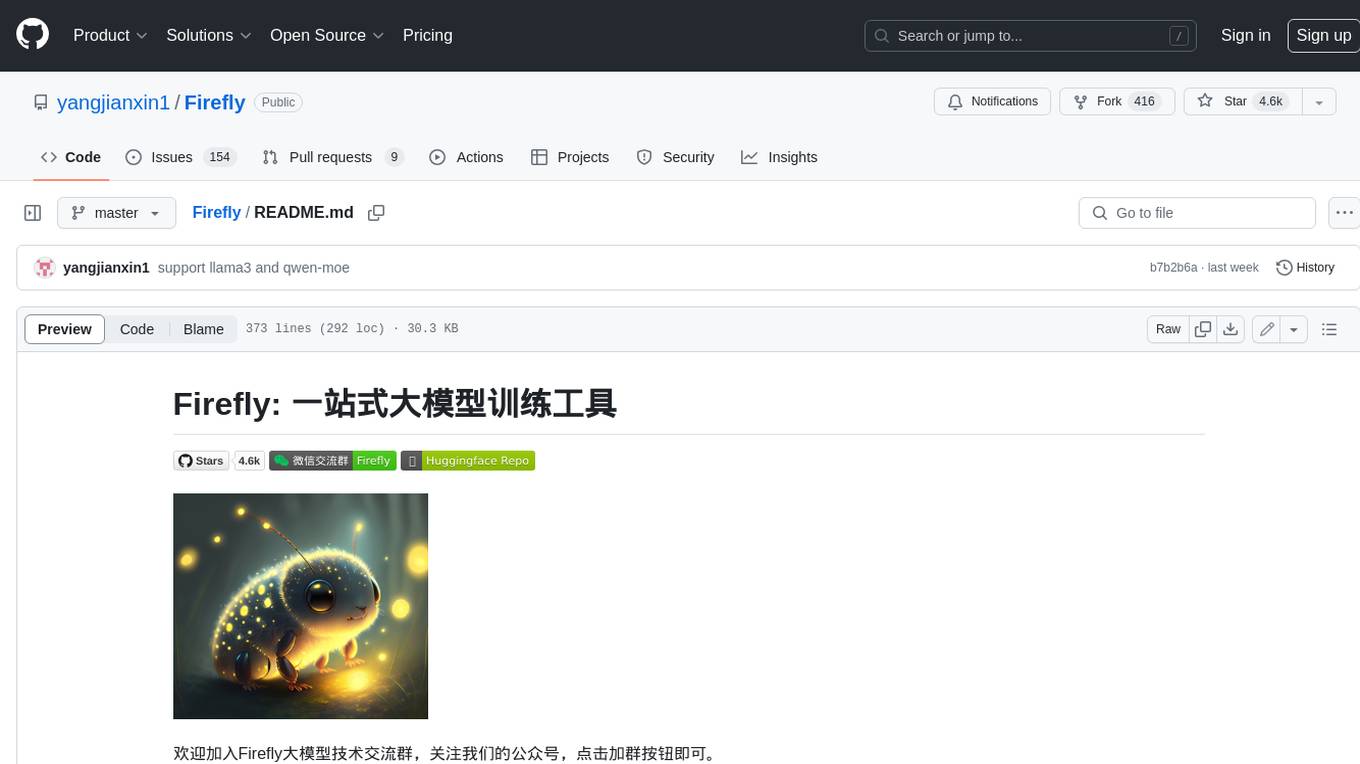
Firefly
Firefly is an open-source large model training project that supports pre-training, fine-tuning, and DPO of mainstream large models. It includes models like Llama3, Gemma, Qwen1.5, MiniCPM, Llama, InternLM, Baichuan, ChatGLM, Yi, Deepseek, Qwen, Orion, Ziya, Xverse, Mistral, Mixtral-8x7B, Zephyr, Vicuna, Bloom, etc. The project supports full-parameter training, LoRA, QLoRA efficient training, and various tasks such as pre-training, SFT, and DPO. Suitable for users with limited training resources, QLoRA is recommended for fine-tuning instructions. The project has achieved good results on the Open LLM Leaderboard with QLoRA training process validation. The latest version has significant updates and adaptations for different chat model templates.
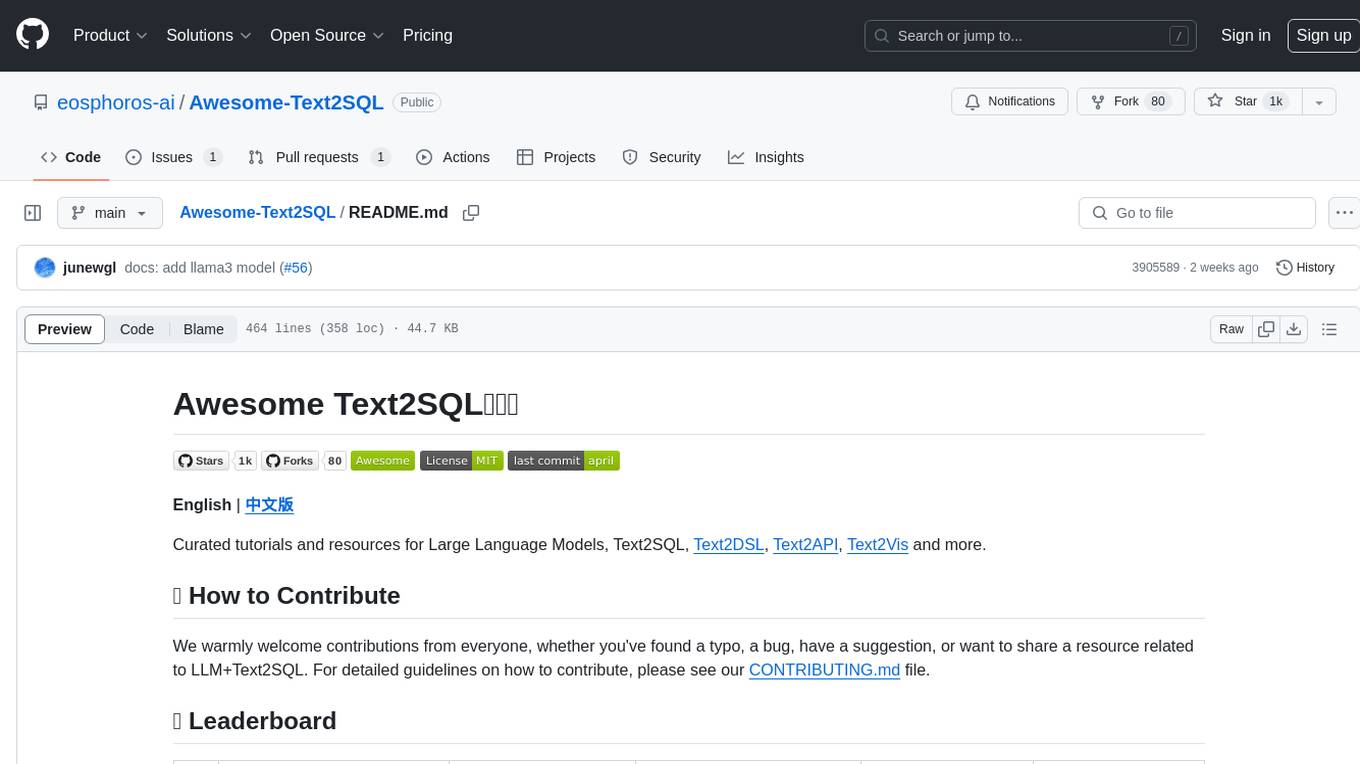
Awesome-Text2SQL
Awesome Text2SQL is a curated repository containing tutorials and resources for Large Language Models, Text2SQL, Text2DSL, Text2API, Text2Vis, and more. It provides guidelines on converting natural language questions into structured SQL queries, with a focus on NL2SQL. The repository includes information on various models, datasets, evaluation metrics, fine-tuning methods, libraries, and practice projects related to Text2SQL. It serves as a comprehensive resource for individuals interested in working with Text2SQL and related technologies.
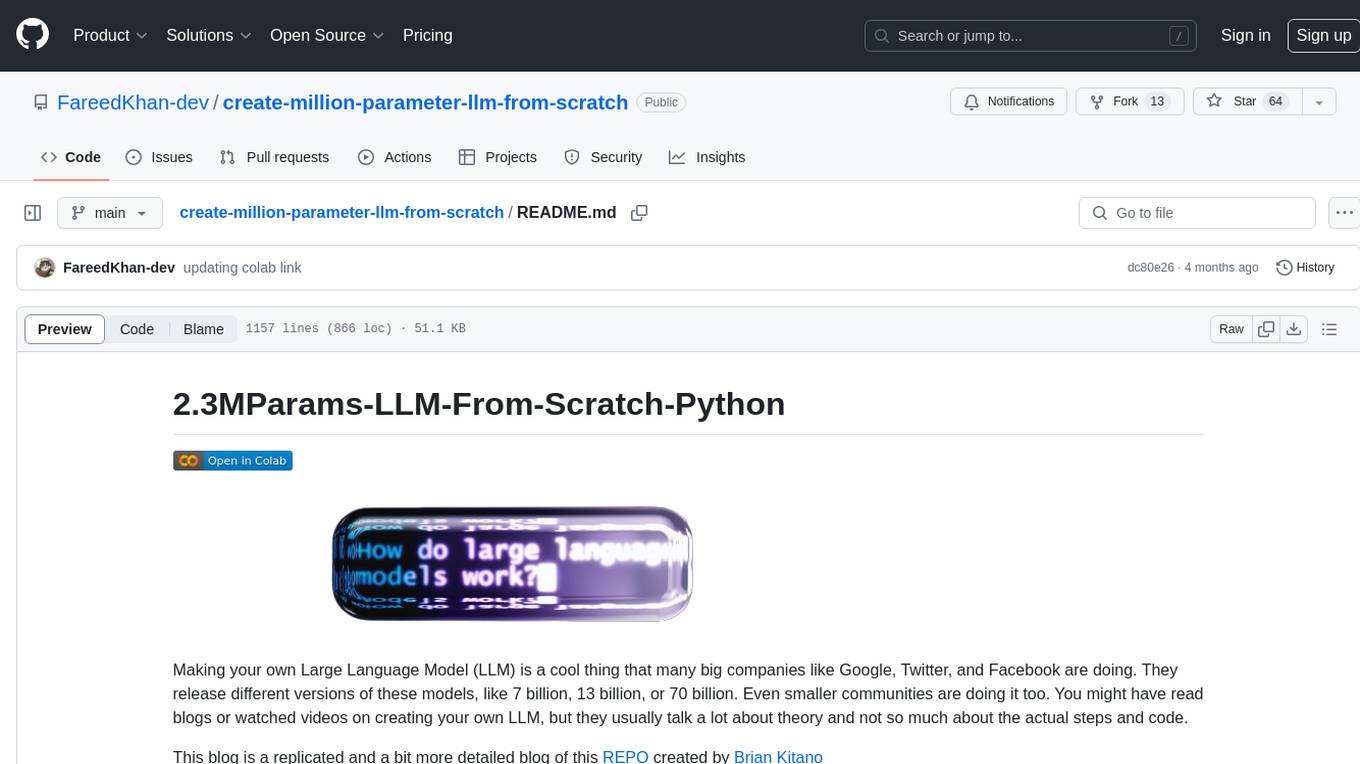
create-million-parameter-llm-from-scratch
The 'create-million-parameter-llm-from-scratch' repository provides a detailed guide on creating a Large Language Model (LLM) with 2.3 million parameters from scratch. The blog replicates the LLaMA approach, incorporating concepts like RMSNorm for pre-normalization, SwiGLU activation function, and Rotary Embeddings. The model is trained on a basic dataset to demonstrate the ease of creating a million-parameter LLM without the need for a high-end GPU.
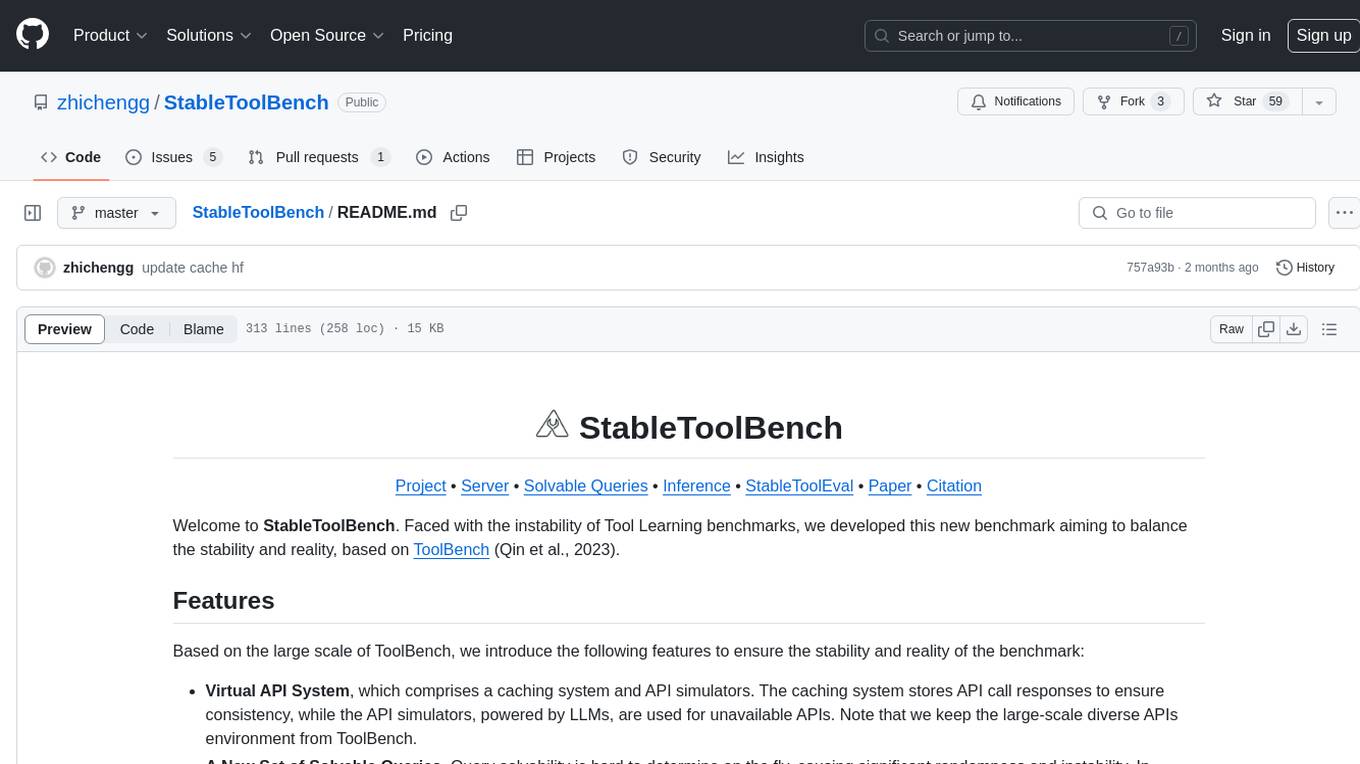
StableToolBench
StableToolBench is a new benchmark developed to address the instability of Tool Learning benchmarks. It aims to balance stability and reality by introducing features such as a Virtual API System with caching and API simulators, a new set of solvable queries determined by LLMs, and a Stable Evaluation System using GPT-4. The Virtual API Server can be set up either by building from source or using a prebuilt Docker image. Users can test the server using provided scripts and evaluate models with Solvable Pass Rate and Solvable Win Rate metrics. The tool also includes model experiments results comparing different models' performance.
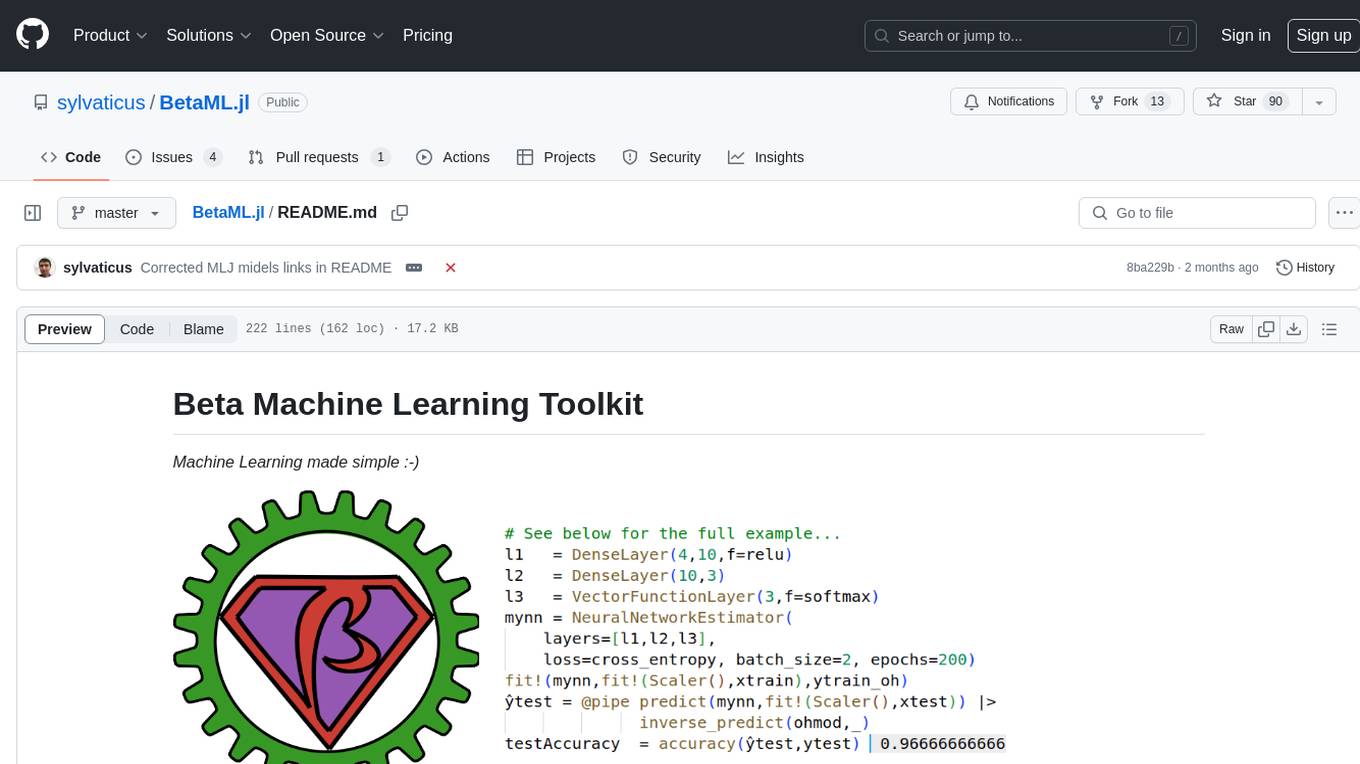
BetaML.jl
The Beta Machine Learning Toolkit is a package containing various algorithms and utilities for implementing machine learning workflows in multiple languages, including Julia, Python, and R. It offers a range of supervised and unsupervised models, data transformers, and assessment tools. The models are implemented entirely in Julia and are not wrappers for third-party models. Users can easily contribute new models or request implementations. The focus is on user-friendliness rather than computational efficiency, making it suitable for educational and research purposes.
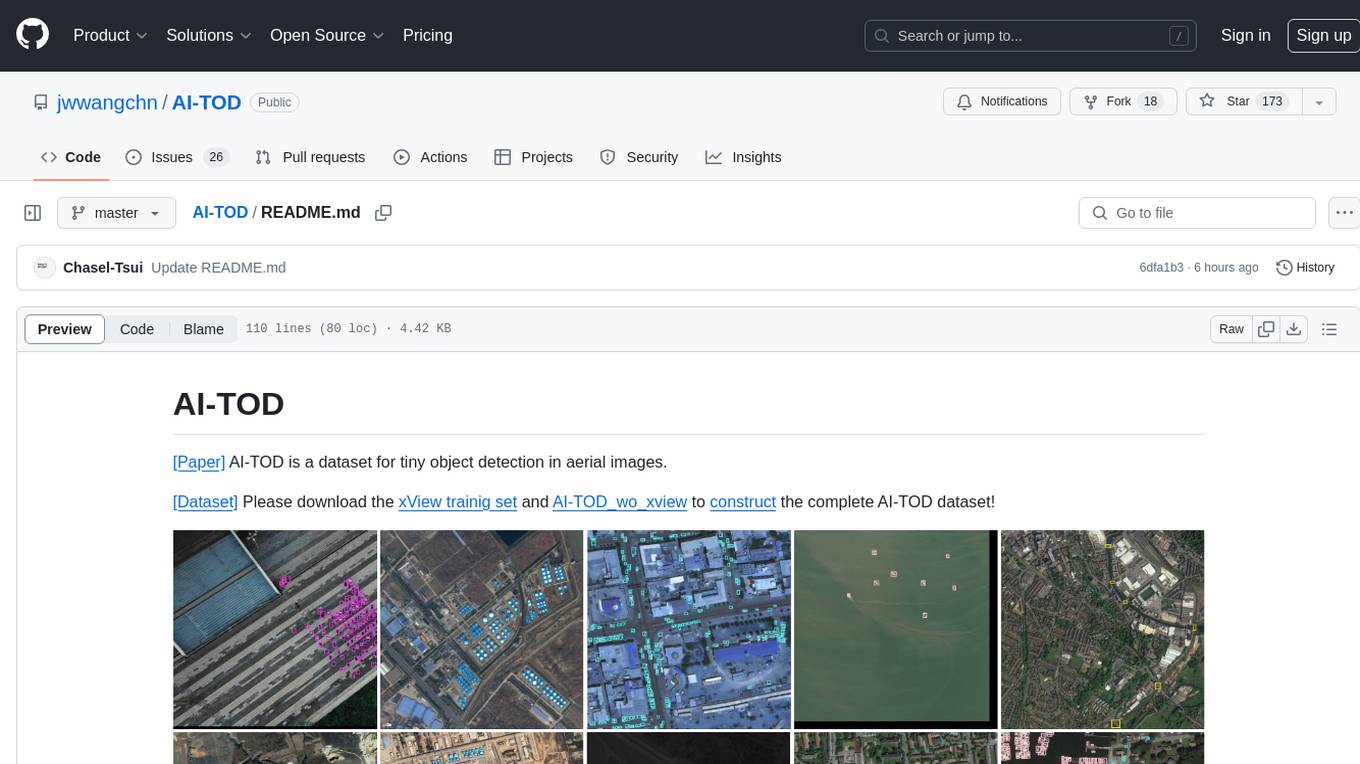
AI-TOD
AI-TOD is a dataset for tiny object detection in aerial images, containing 700,621 object instances across 28,036 images. Objects in AI-TOD are smaller with a mean size of 12.8 pixels compared to other aerial image datasets. To use AI-TOD, download xView training set and AI-TOD_wo_xview, then generate the complete dataset using the provided synthesis tool. The dataset is publicly available for academic and research purposes under CC BY-NC-SA 4.0 license.
For similar jobs
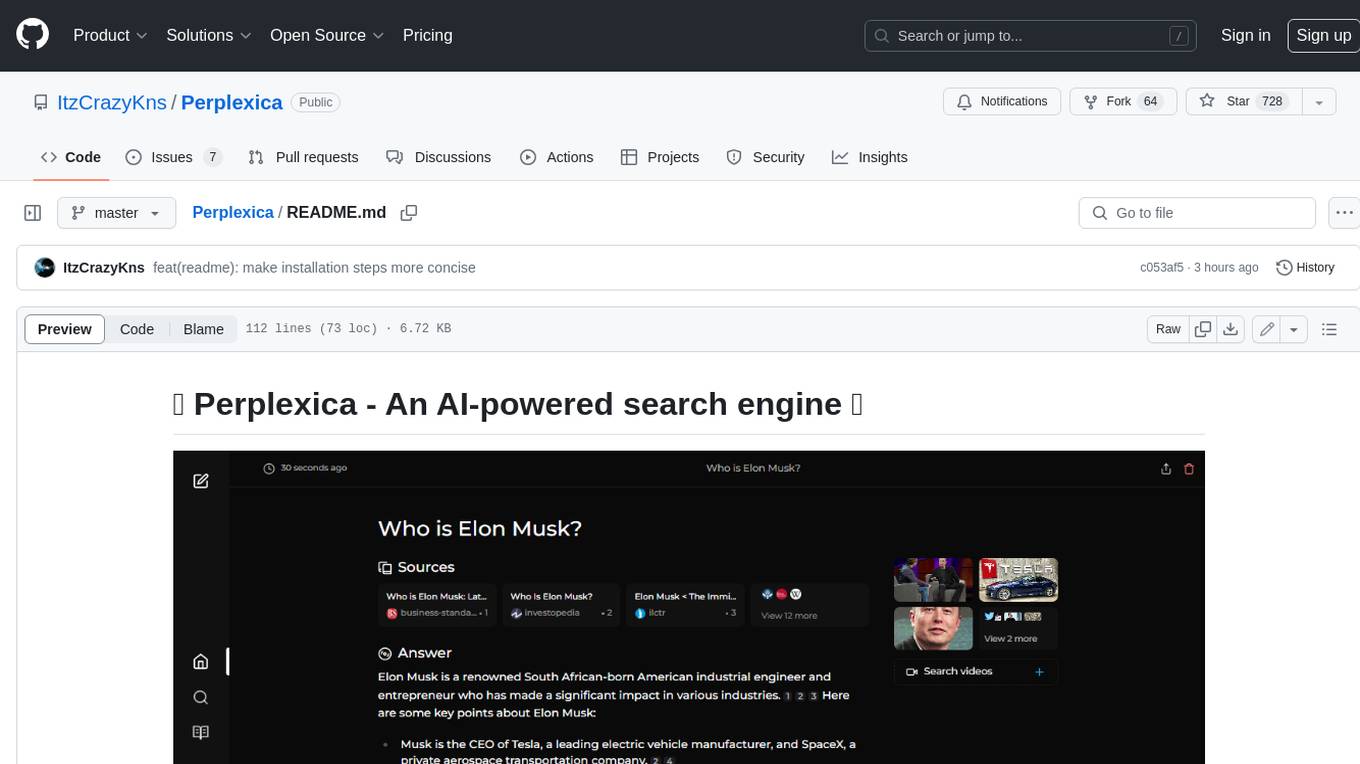
Perplexica
Perplexica is an open-source AI-powered search engine that utilizes advanced machine learning algorithms to provide clear answers with sources cited. It offers various modes like Copilot Mode, Normal Mode, and Focus Modes for specific types of questions. Perplexica ensures up-to-date information by using SearxNG metasearch engine. It also features image and video search capabilities and upcoming features include finalizing Copilot Mode and adding Discover and History Saving features.

KULLM
KULLM (구름) is a Korean Large Language Model developed by Korea University NLP & AI Lab and HIAI Research Institute. It is based on the upstage/SOLAR-10.7B-v1.0 model and has been fine-tuned for instruction. The model has been trained on 8×A100 GPUs and is capable of generating responses in Korean language. KULLM exhibits hallucination and repetition phenomena due to its decoding strategy. Users should be cautious as the model may produce inaccurate or harmful results. Performance may vary in benchmarks without a fixed system prompt.
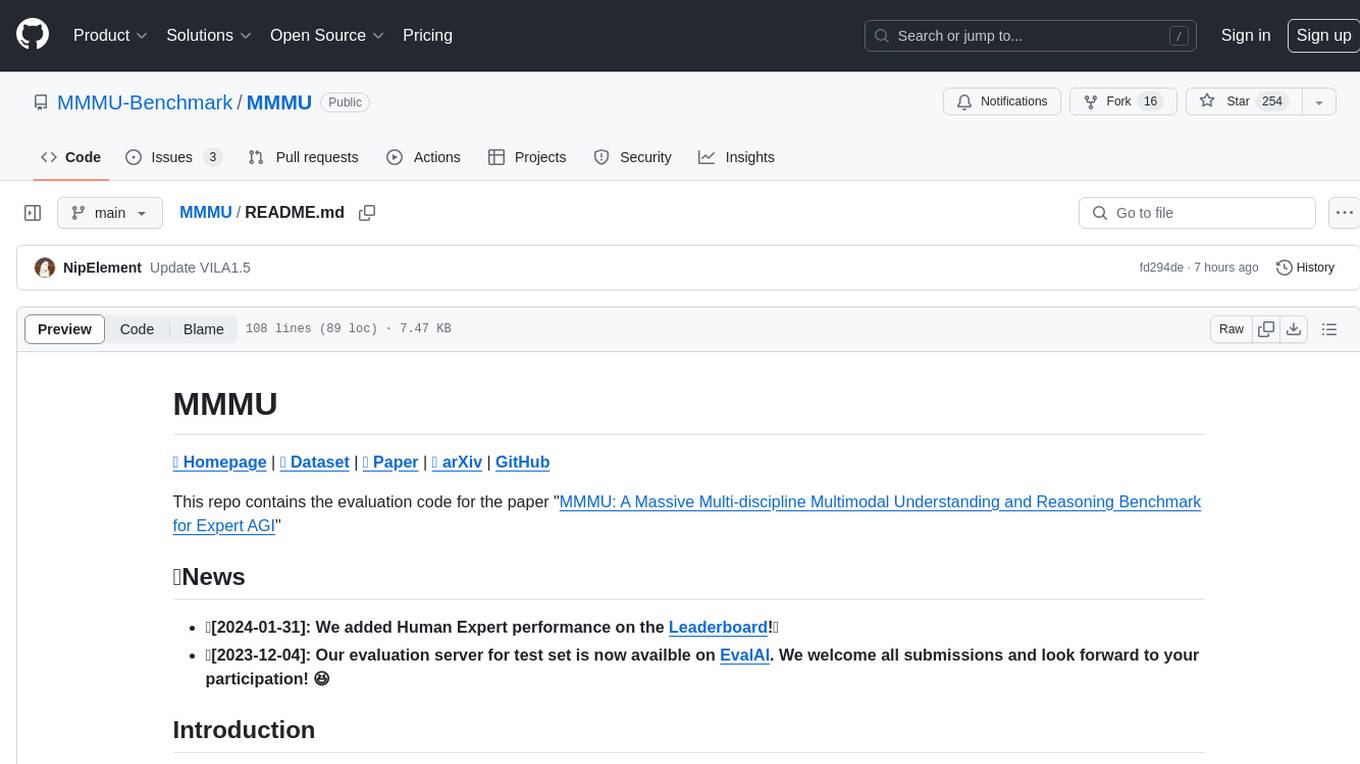
MMMU
MMMU is a benchmark designed to evaluate multimodal models on college-level subject knowledge tasks, covering 30 subjects and 183 subfields with 11.5K questions. It focuses on advanced perception and reasoning with domain-specific knowledge, challenging models to perform tasks akin to those faced by experts. The evaluation of various models highlights substantial challenges, with room for improvement to stimulate the community towards expert artificial general intelligence (AGI).
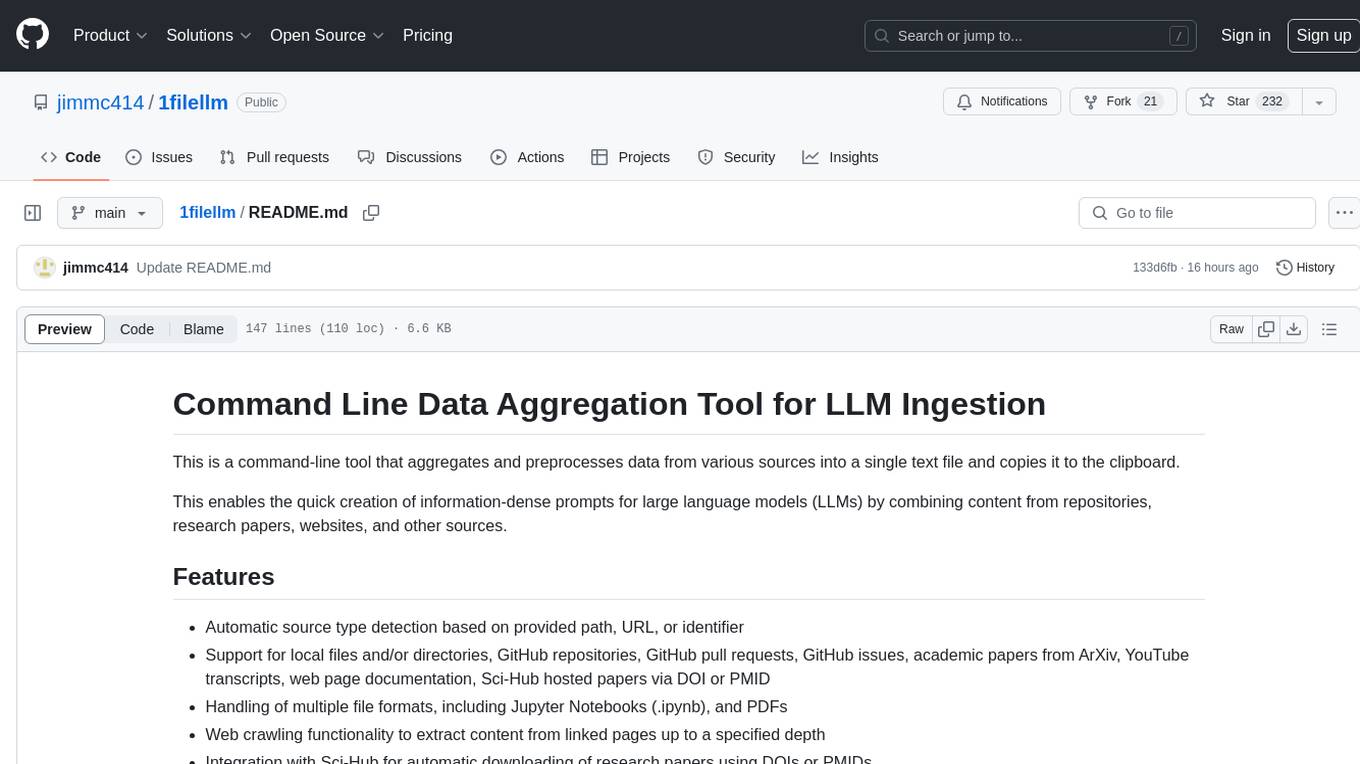
1filellm
1filellm is a command-line data aggregation tool designed for LLM ingestion. It aggregates and preprocesses data from various sources into a single text file, facilitating the creation of information-dense prompts for large language models. The tool supports automatic source type detection, handling of multiple file formats, web crawling functionality, integration with Sci-Hub for research paper downloads, text preprocessing, and token count reporting. Users can input local files, directories, GitHub repositories, pull requests, issues, ArXiv papers, YouTube transcripts, web pages, Sci-Hub papers via DOI or PMID. The tool provides uncompressed and compressed text outputs, with the uncompressed text automatically copied to the clipboard for easy pasting into LLMs.
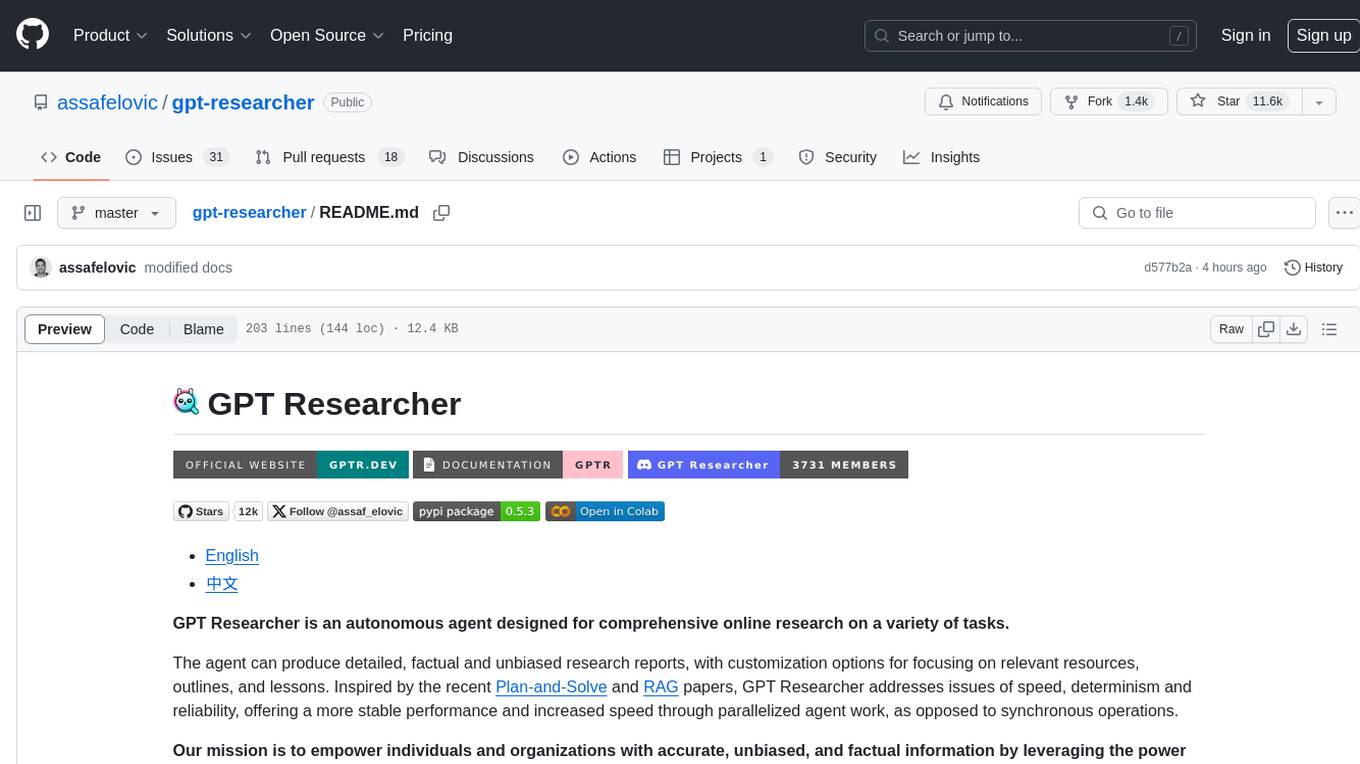
gpt-researcher
GPT Researcher is an autonomous agent designed for comprehensive online research on a variety of tasks. It can produce detailed, factual, and unbiased research reports with customization options. The tool addresses issues of speed, determinism, and reliability by leveraging parallelized agent work. The main idea involves running 'planner' and 'execution' agents to generate research questions, seek related information, and create research reports. GPT Researcher optimizes costs and completes tasks in around 3 minutes. Features include generating long research reports, aggregating web sources, an easy-to-use web interface, scraping web sources, and exporting reports to various formats.
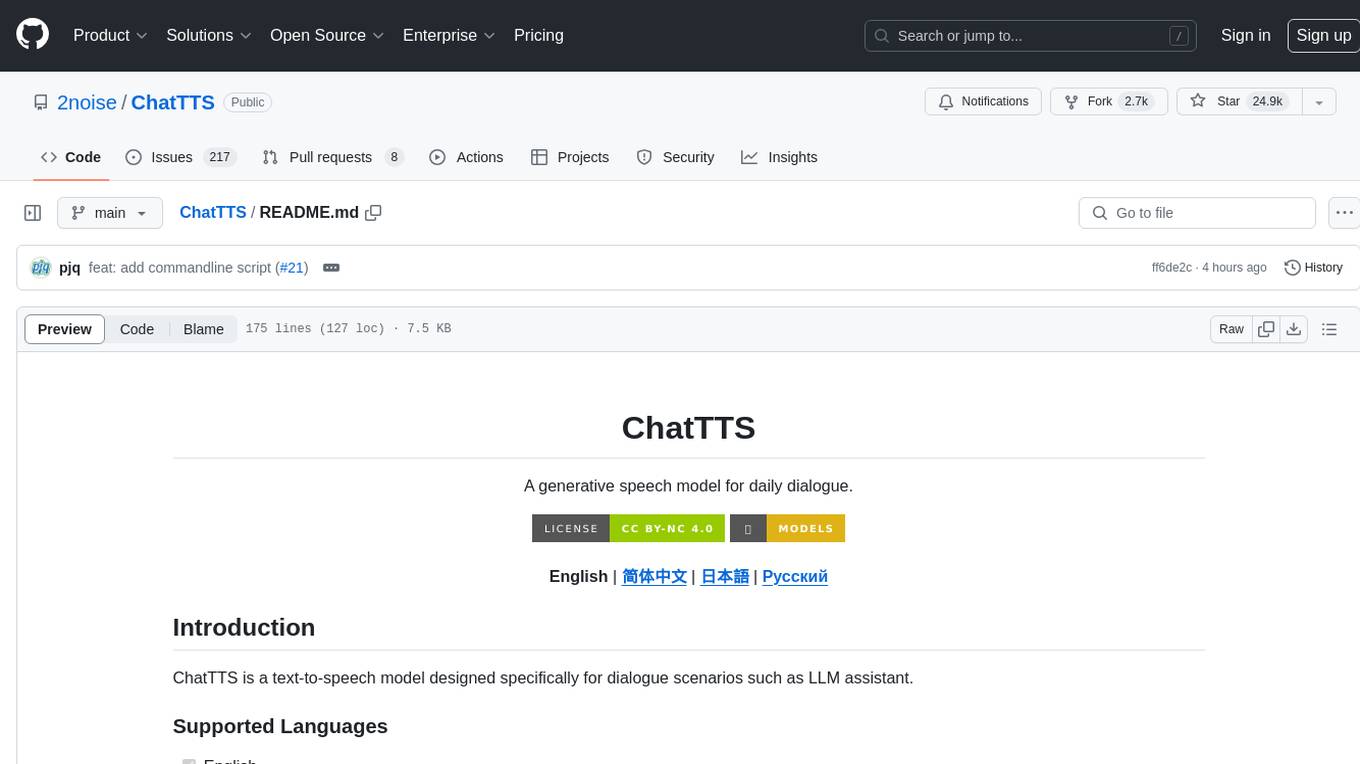
ChatTTS
ChatTTS is a generative speech model optimized for dialogue scenarios, providing natural and expressive speech synthesis with fine-grained control over prosodic features. It supports multiple speakers and surpasses most open-source TTS models in terms of prosody. The model is trained with 100,000+ hours of Chinese and English audio data, and the open-source version on HuggingFace is a 40,000-hour pre-trained model without SFT. The roadmap includes open-sourcing additional features like VQ encoder, multi-emotion control, and streaming audio generation. The tool is intended for academic and research use only, with precautions taken to limit potential misuse.
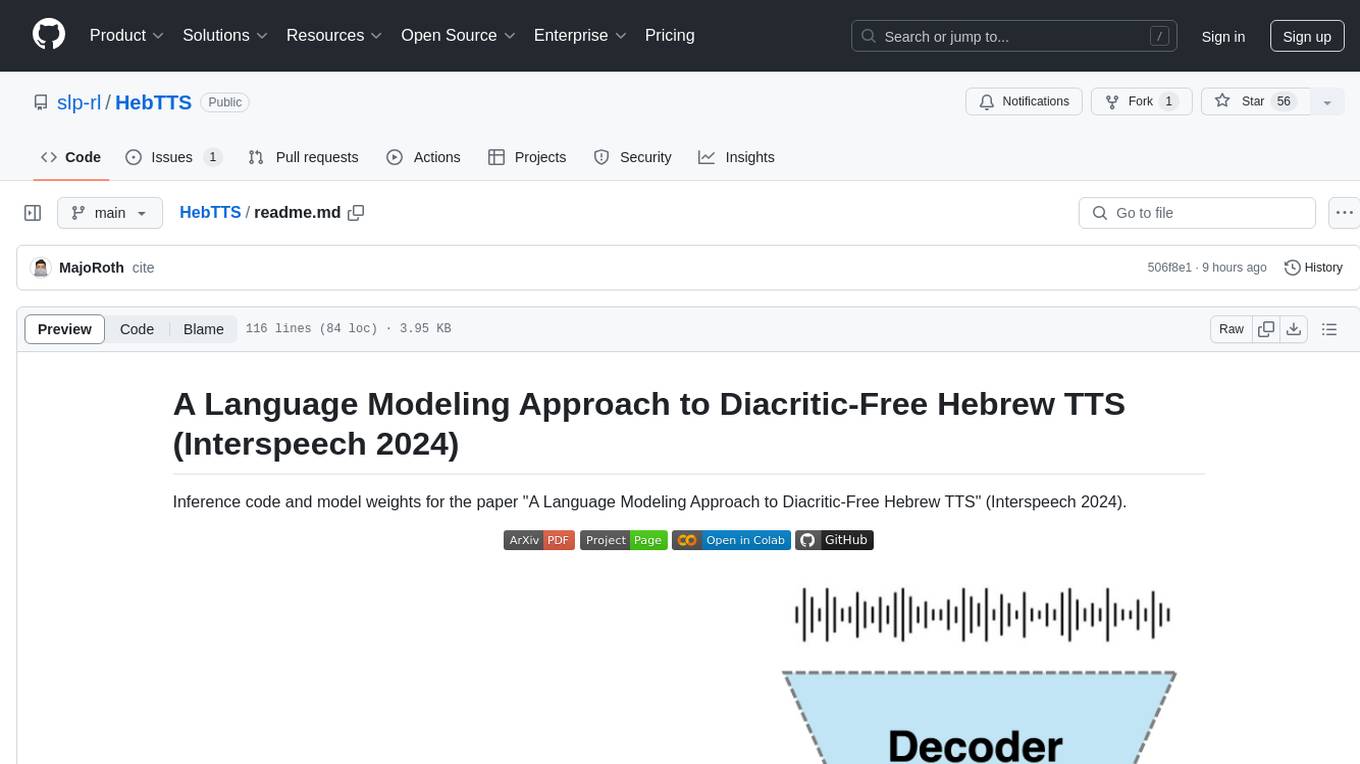
HebTTS
HebTTS is a language modeling approach to diacritic-free Hebrew text-to-speech (TTS) system. It addresses the challenge of accurately mapping text to speech in Hebrew by proposing a language model that operates on discrete speech representations and is conditioned on a word-piece tokenizer. The system is optimized using weakly supervised recordings and outperforms diacritic-based Hebrew TTS systems in terms of content preservation and naturalness of generated speech.
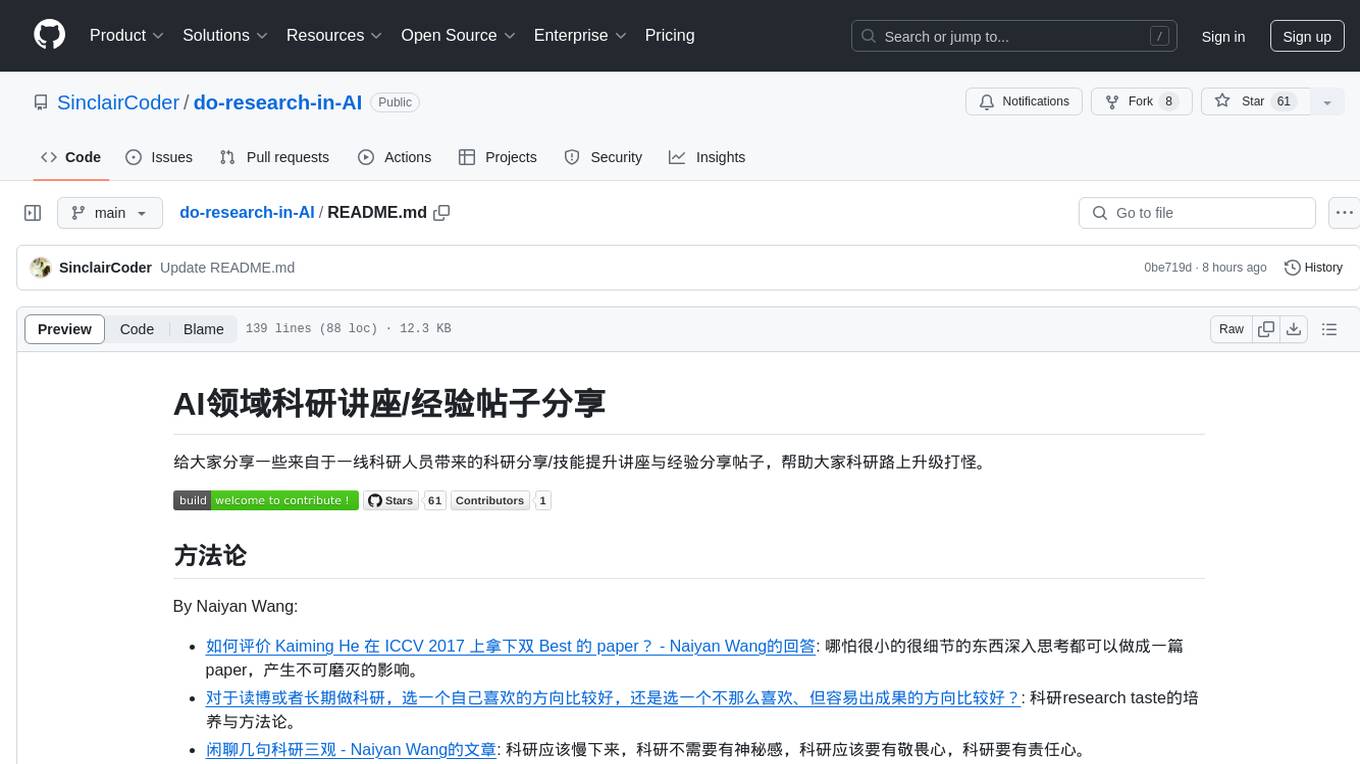
do-research-in-AI
This repository is a collection of research lectures and experience sharing posts from frontline researchers in the field of AI. It aims to help individuals upgrade their research skills and knowledge through insightful talks and experiences shared by experts. The content covers various topics such as evaluating research papers, choosing research directions, research methodologies, and tips for writing high-quality scientific papers. The repository also includes discussions on academic career paths, research ethics, and the emotional aspects of research work. Overall, it serves as a valuable resource for individuals interested in advancing their research capabilities in the field of AI.







